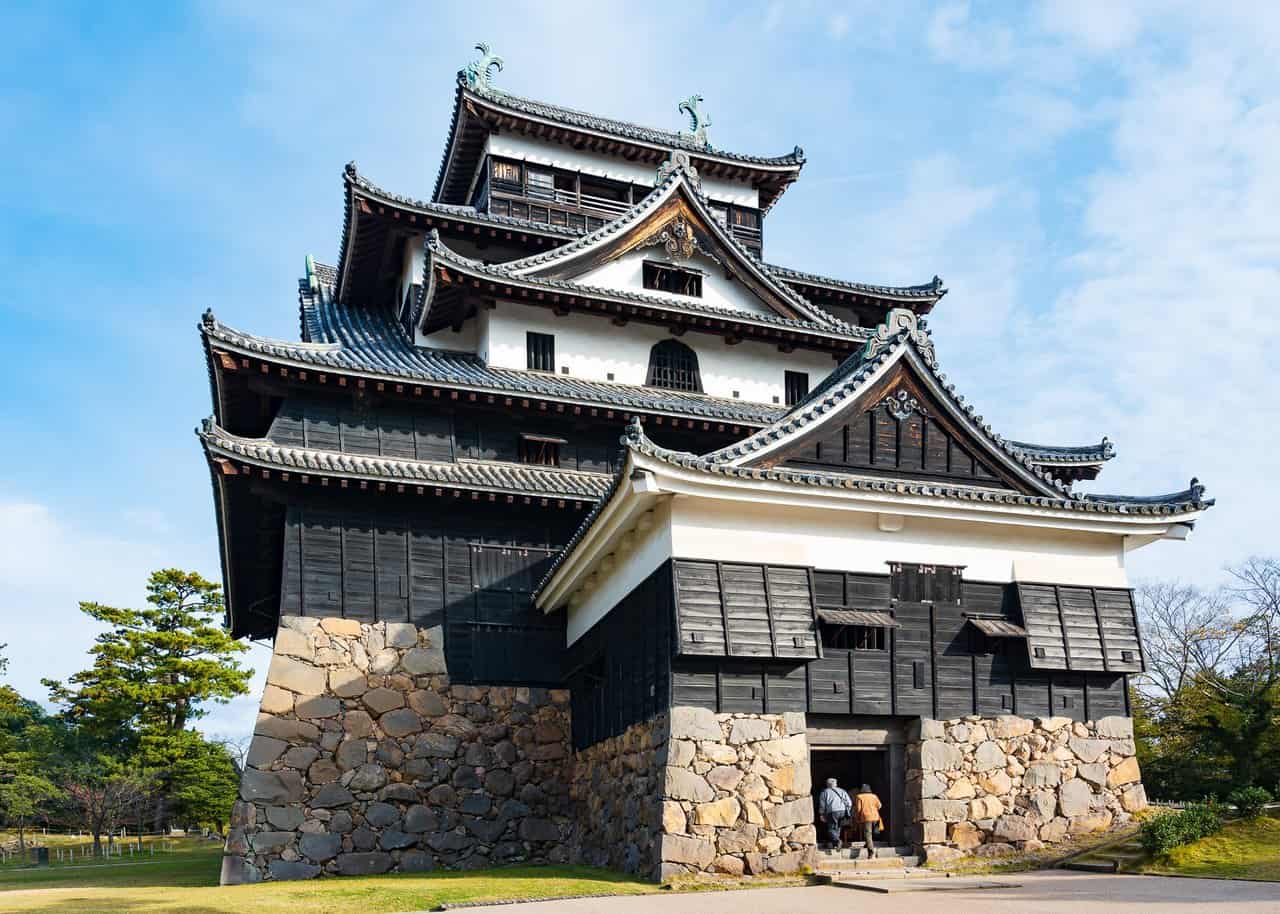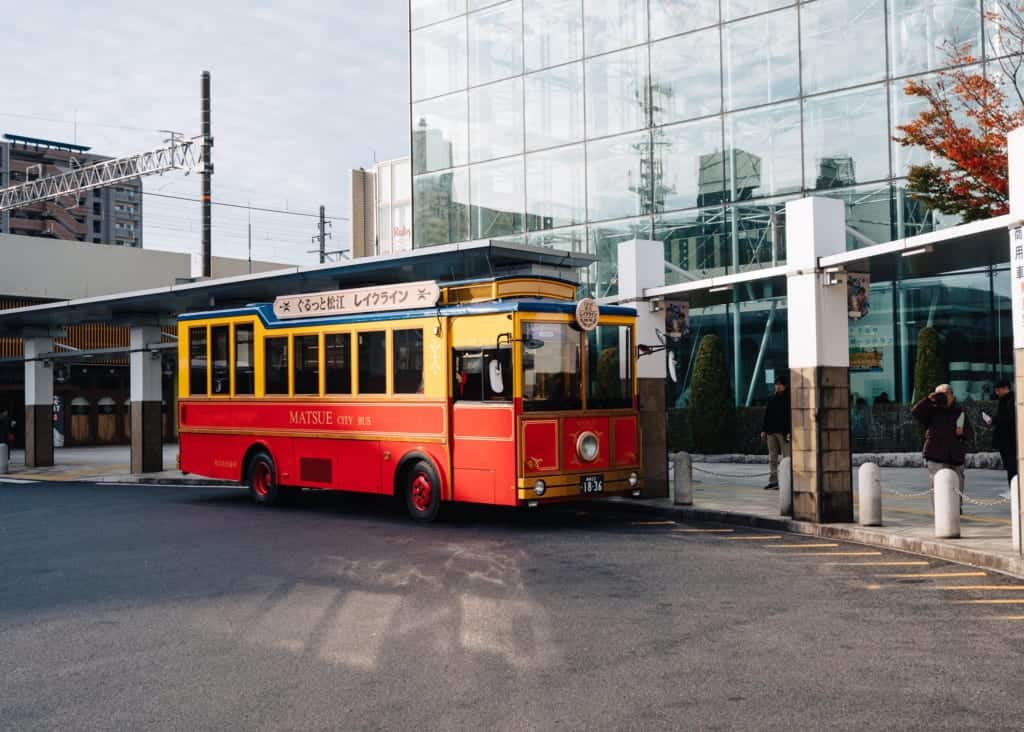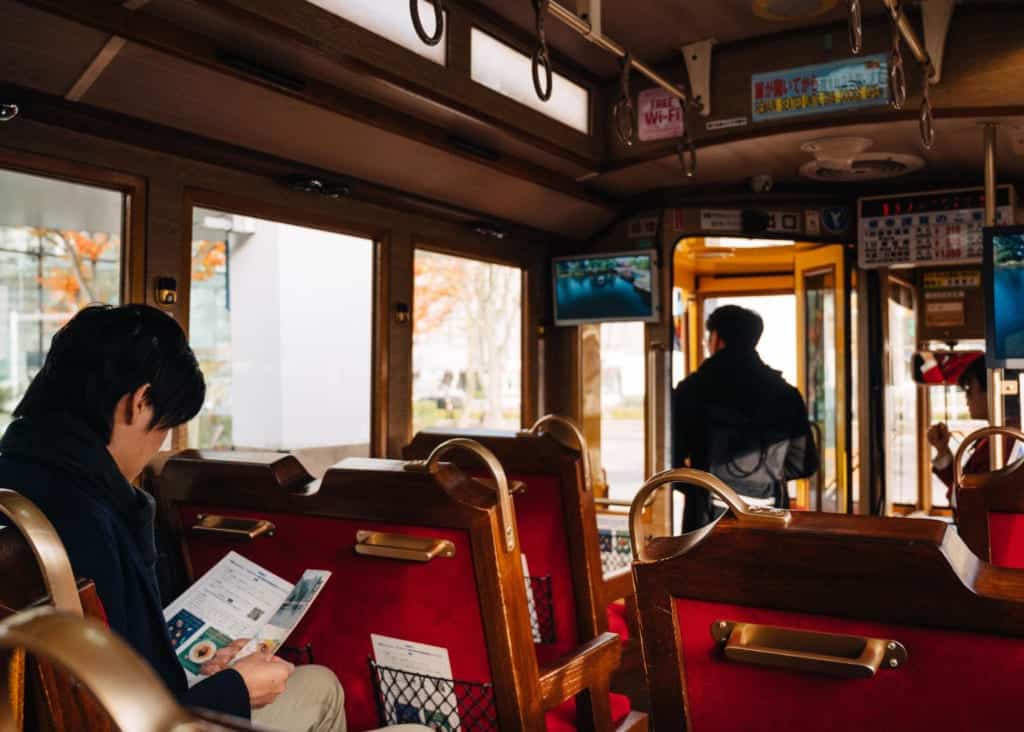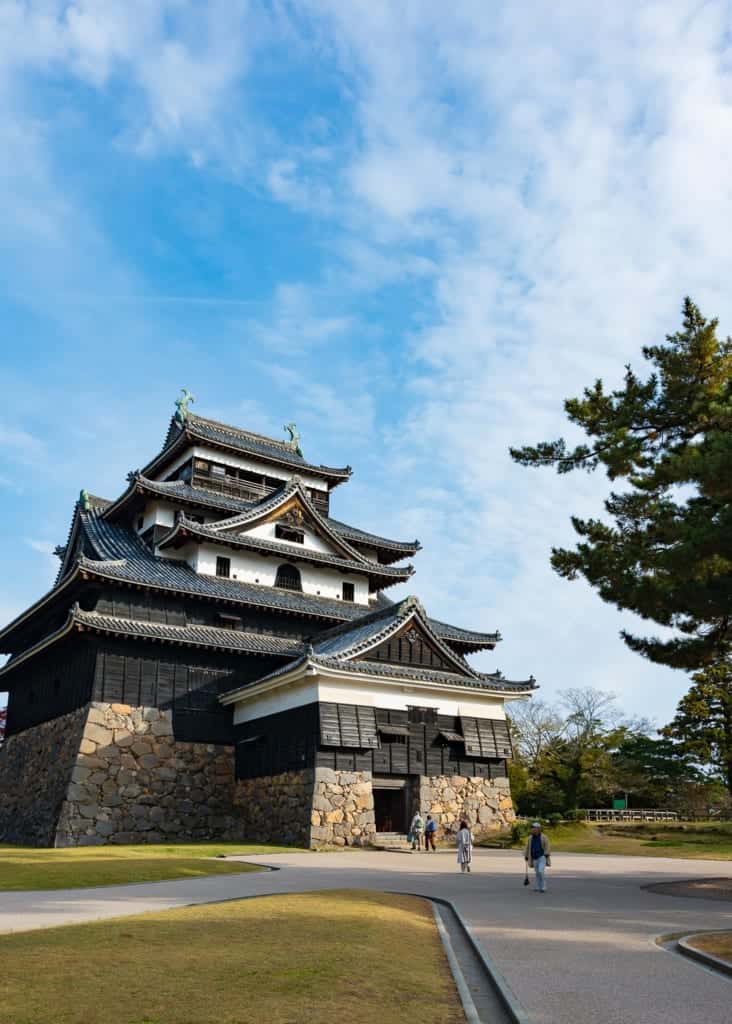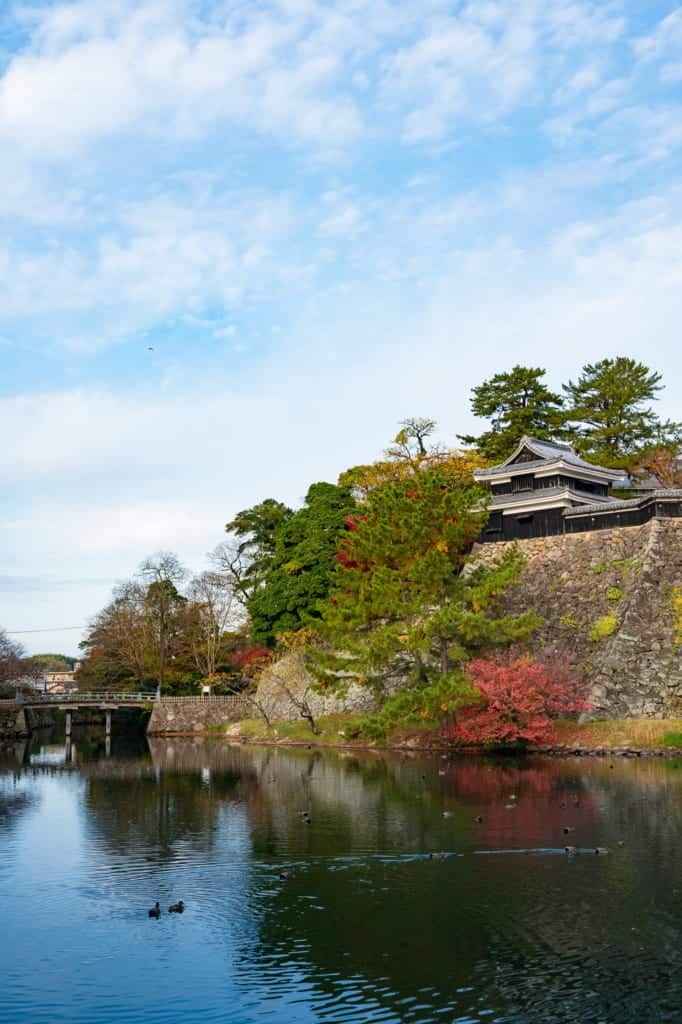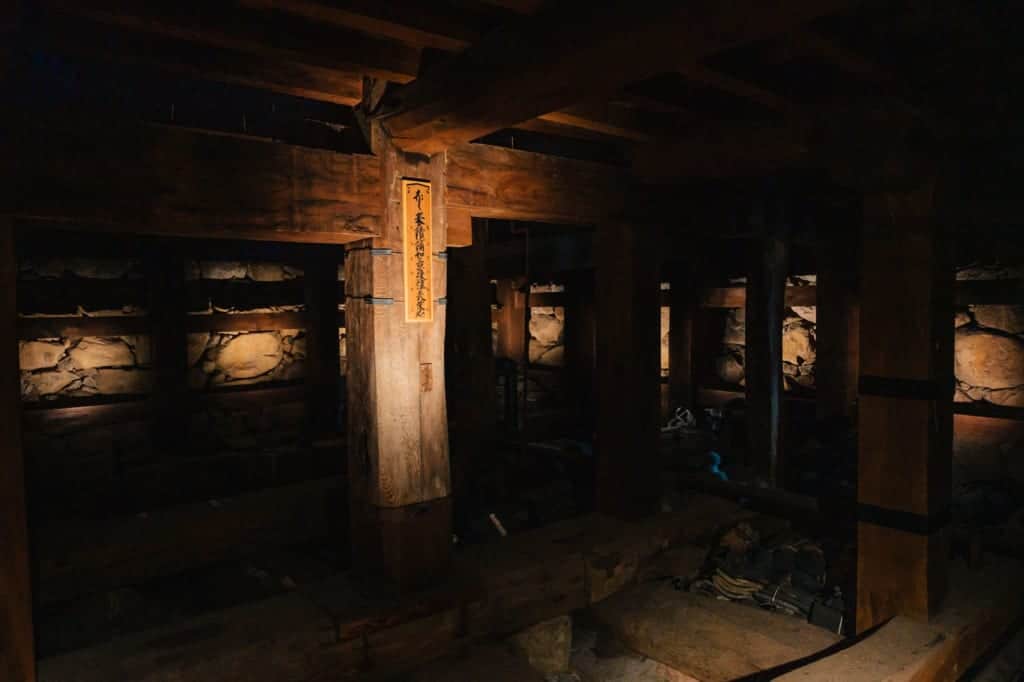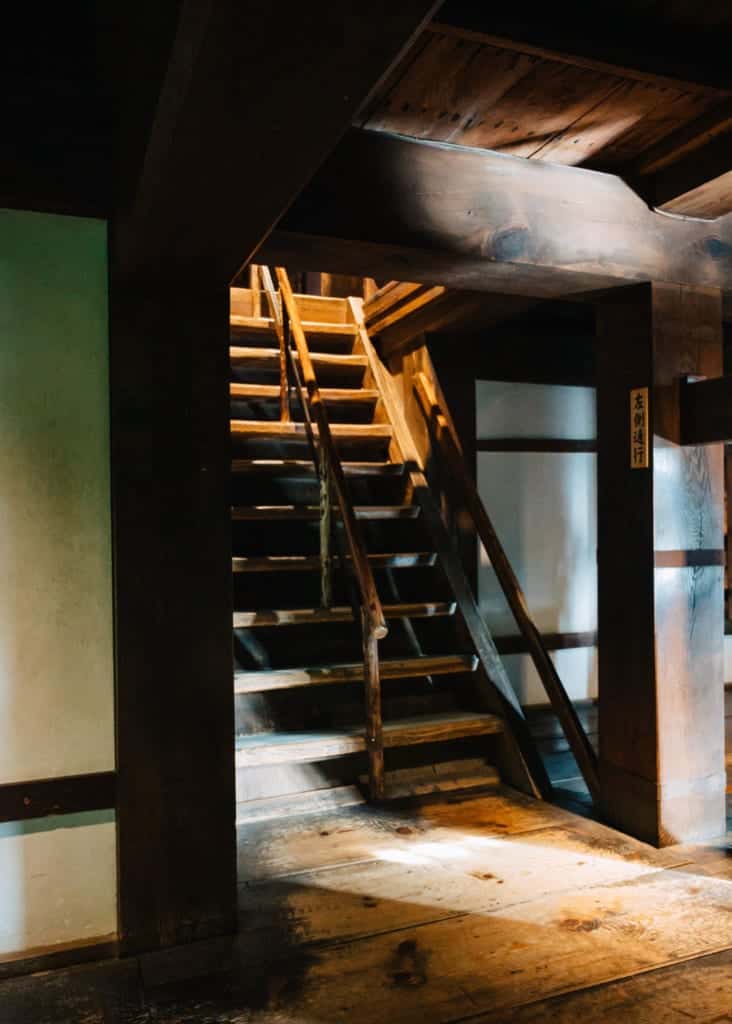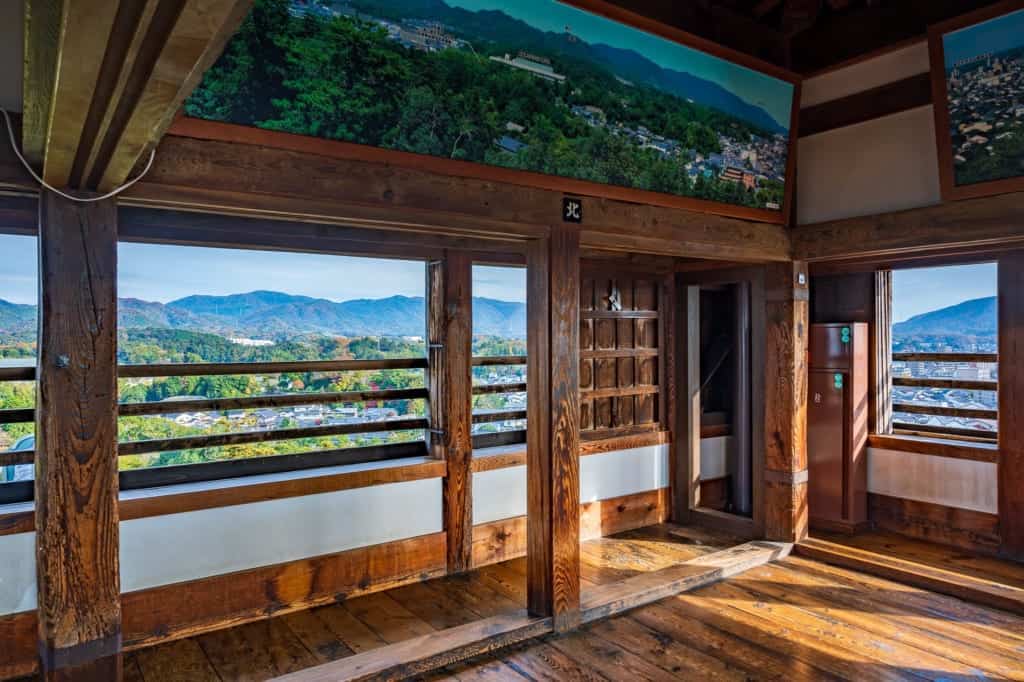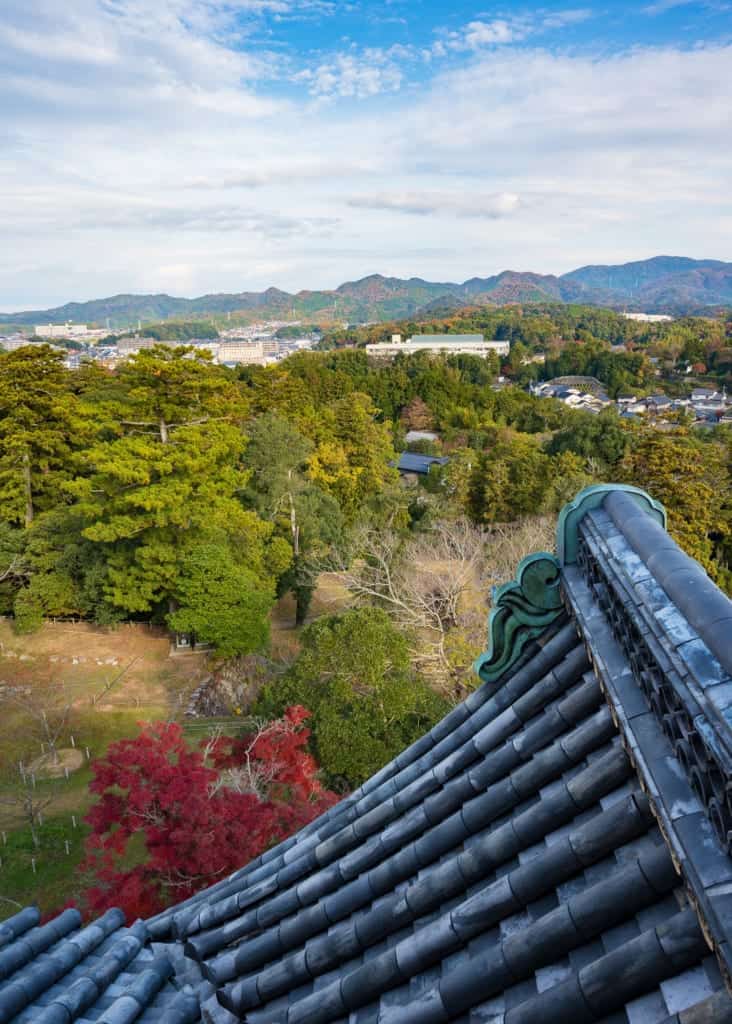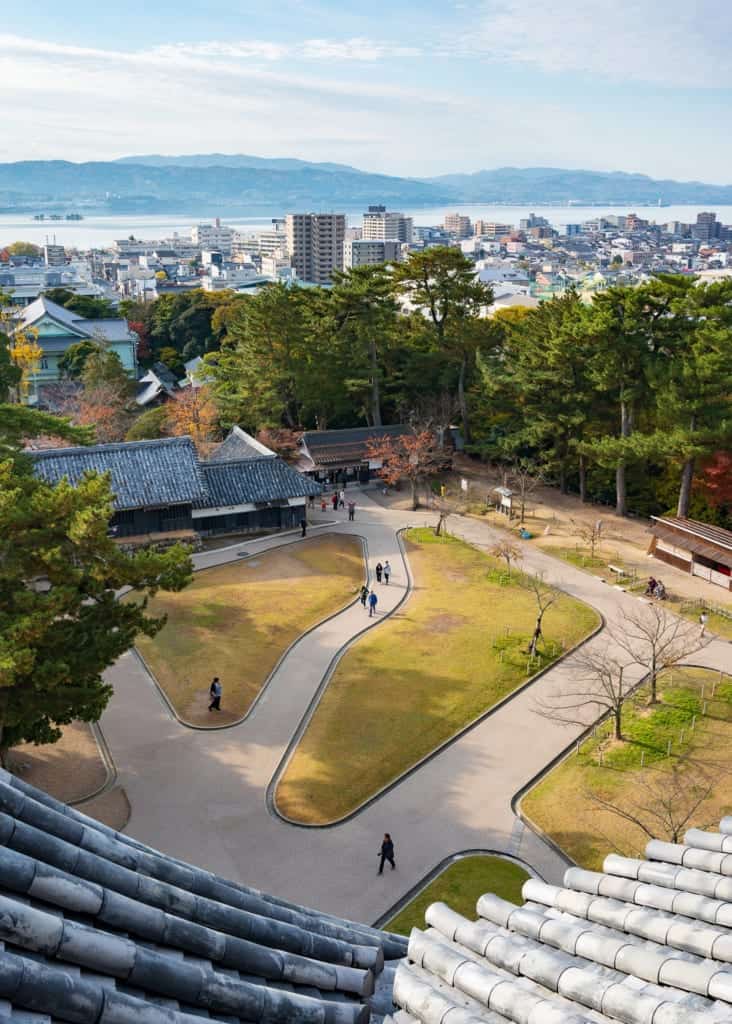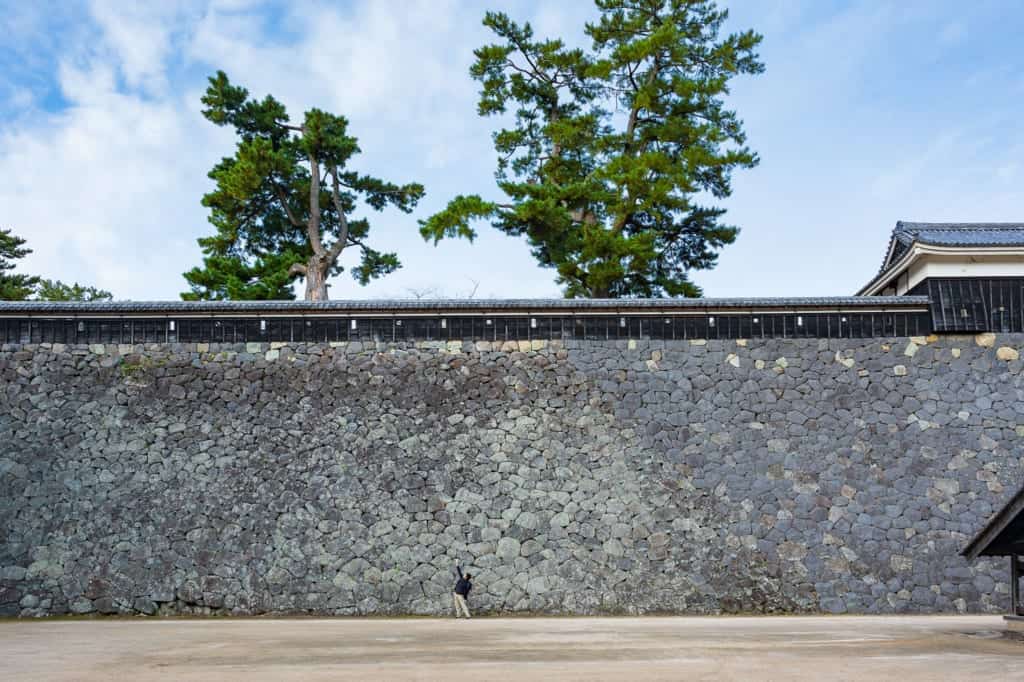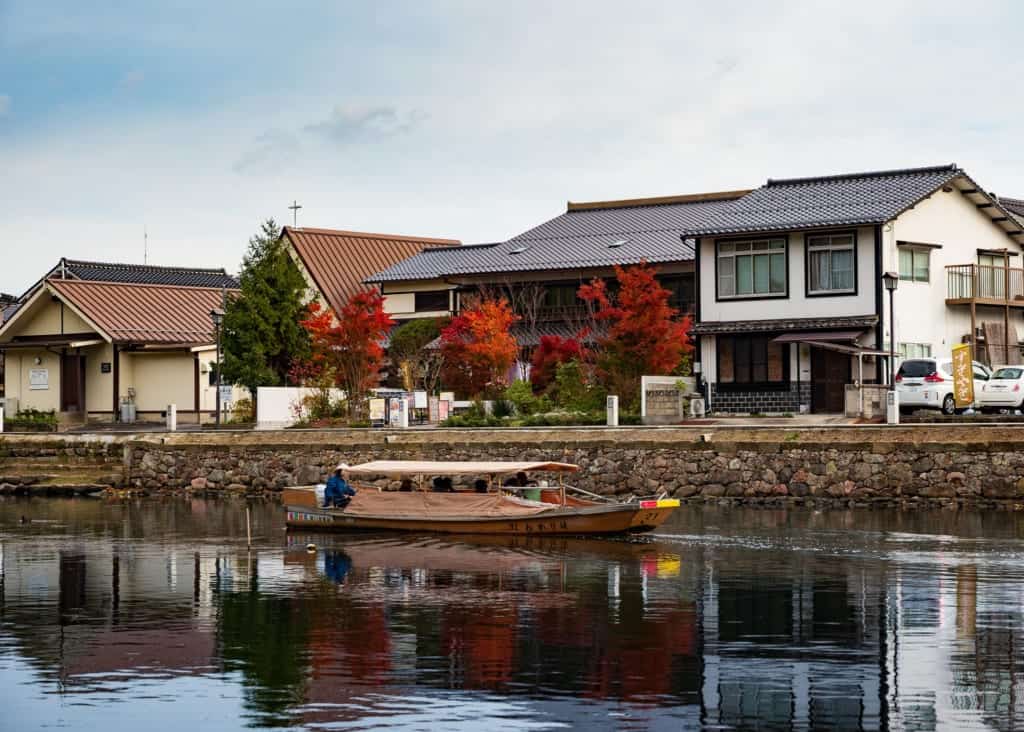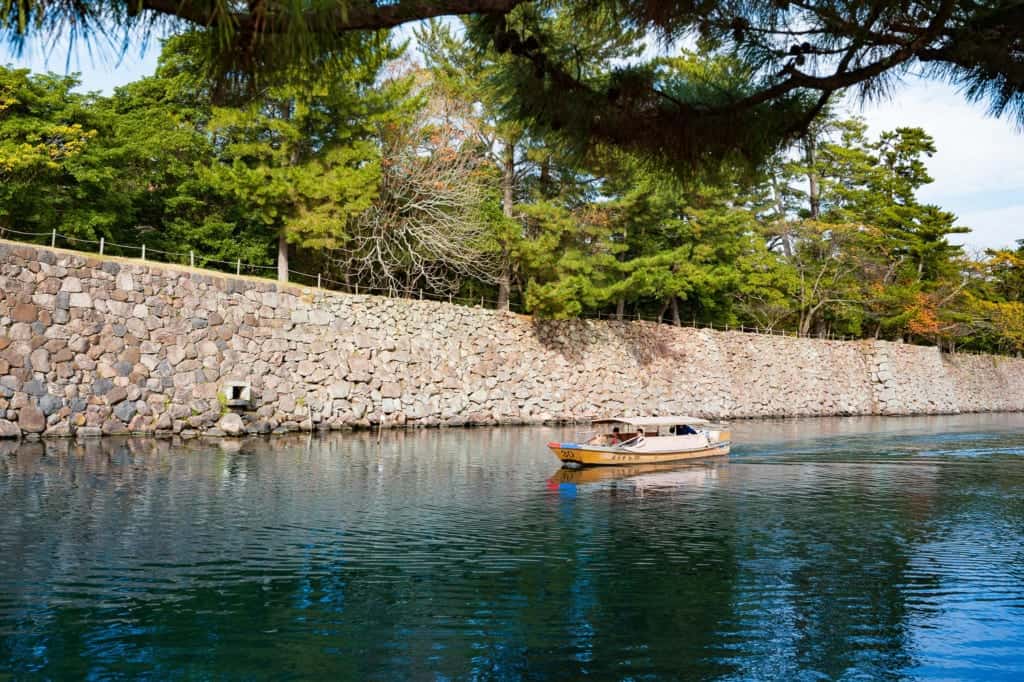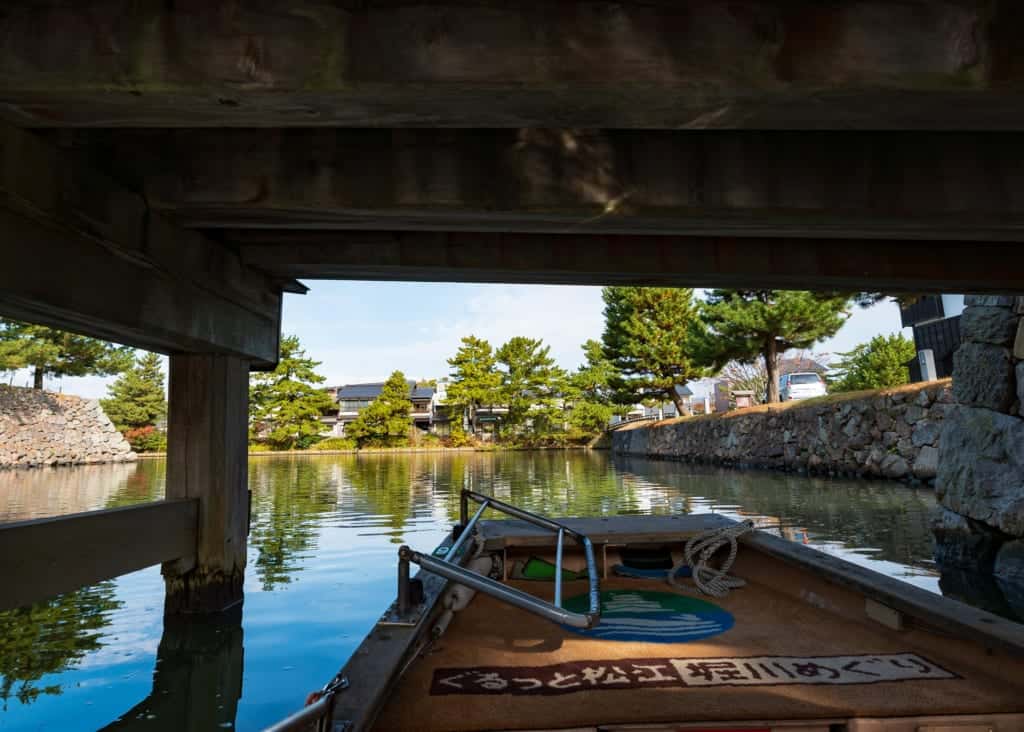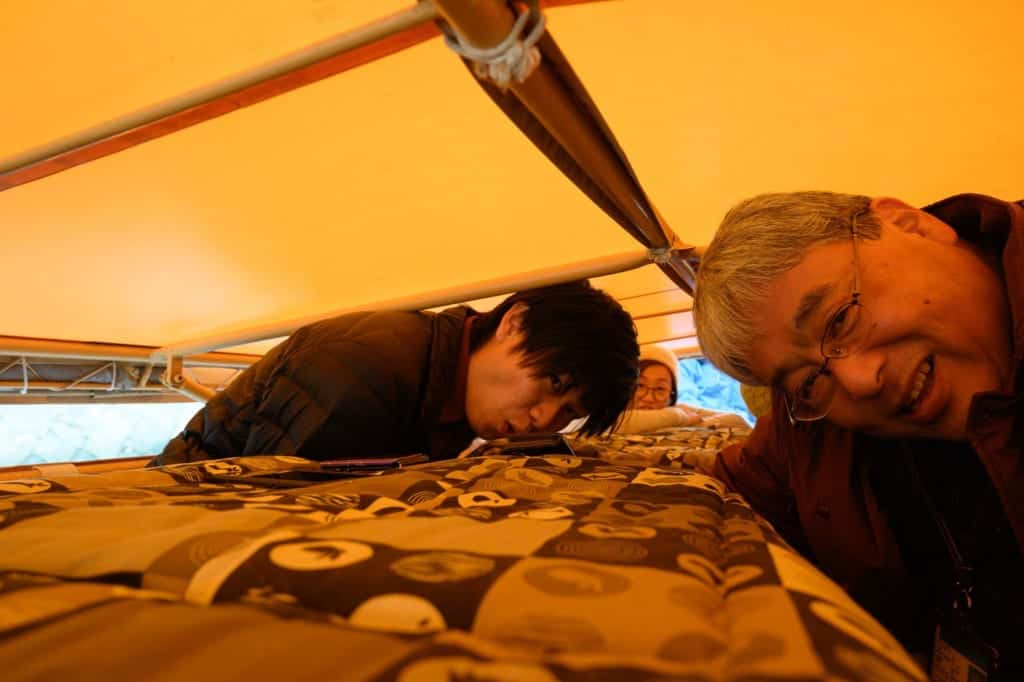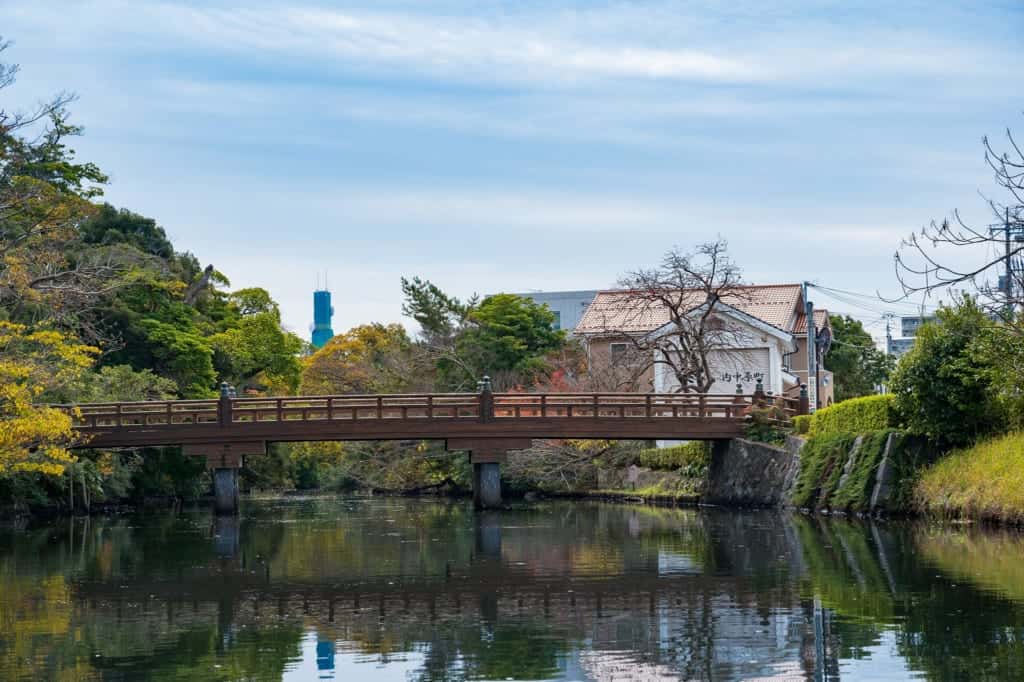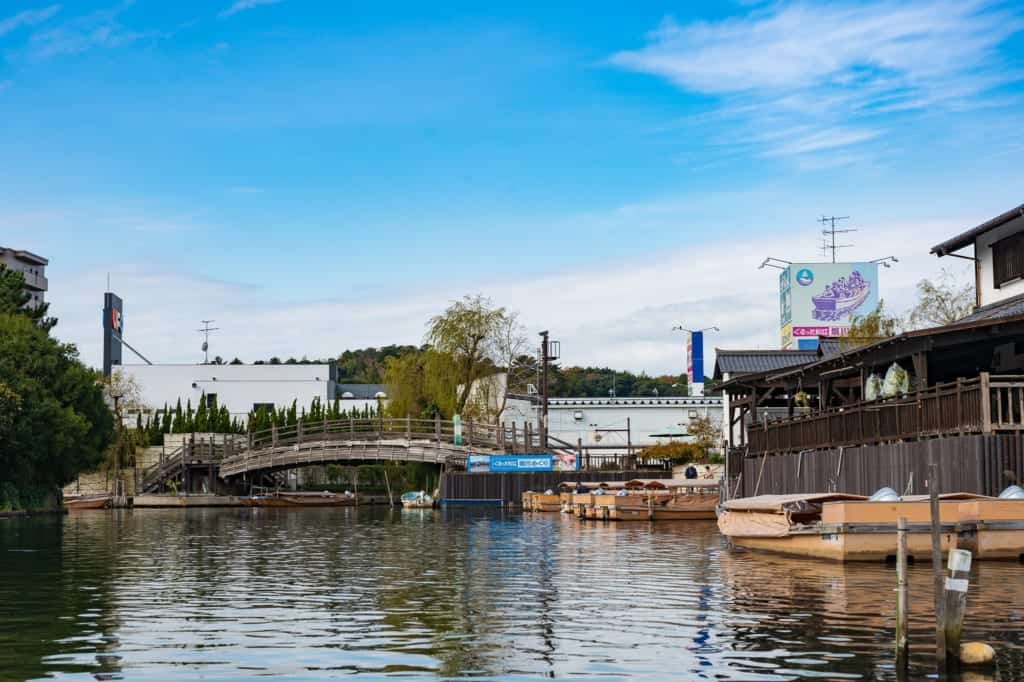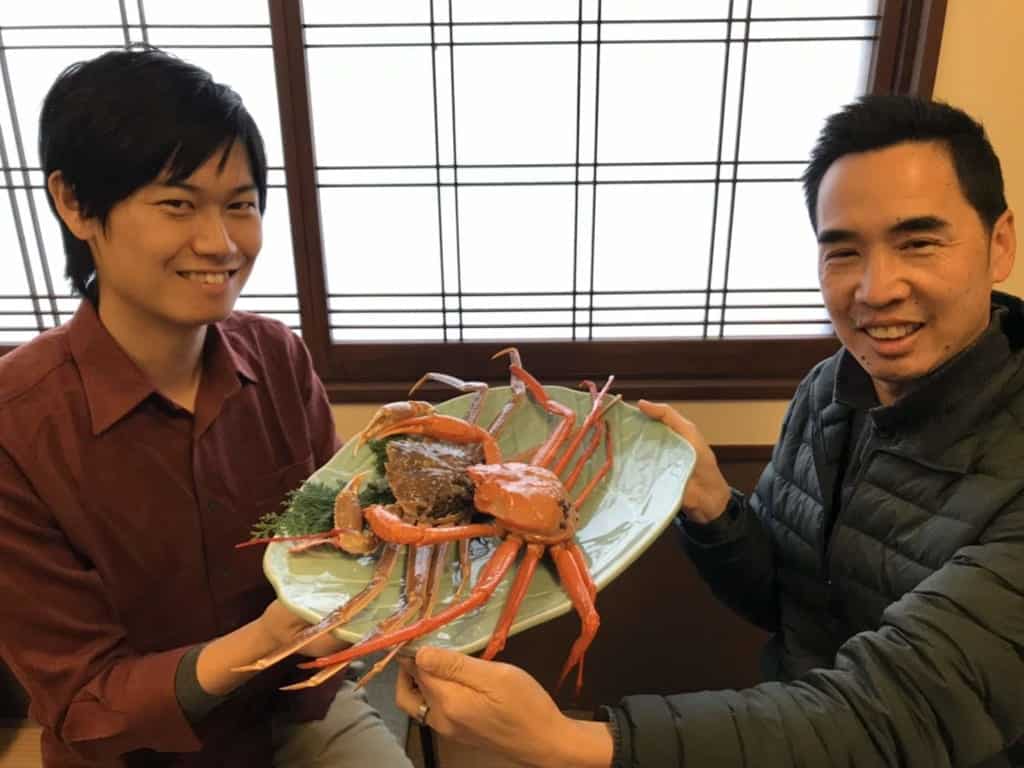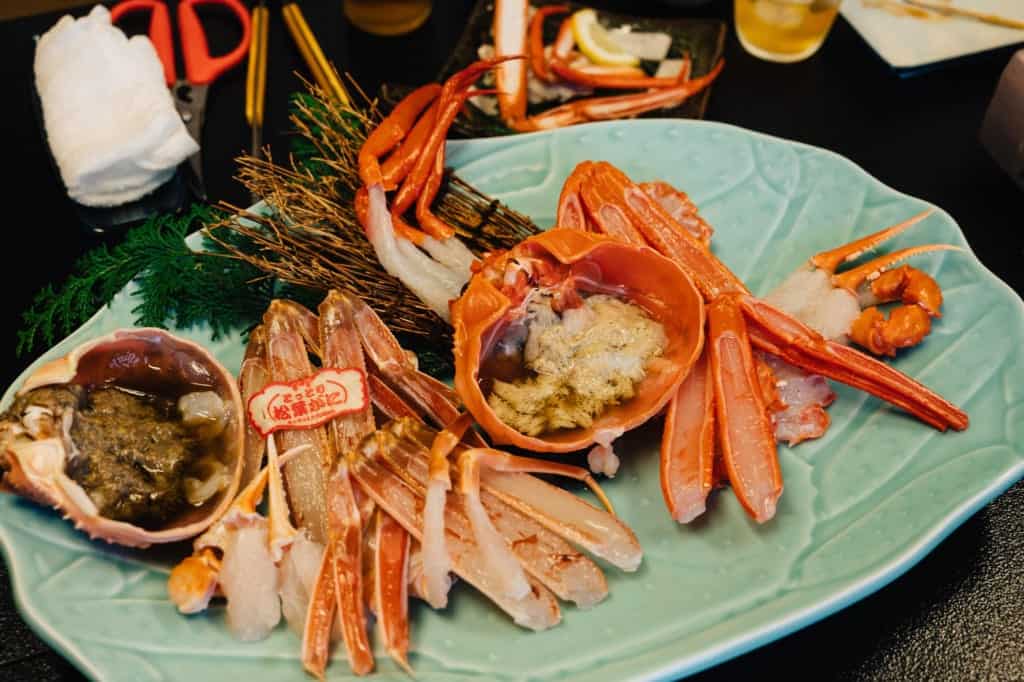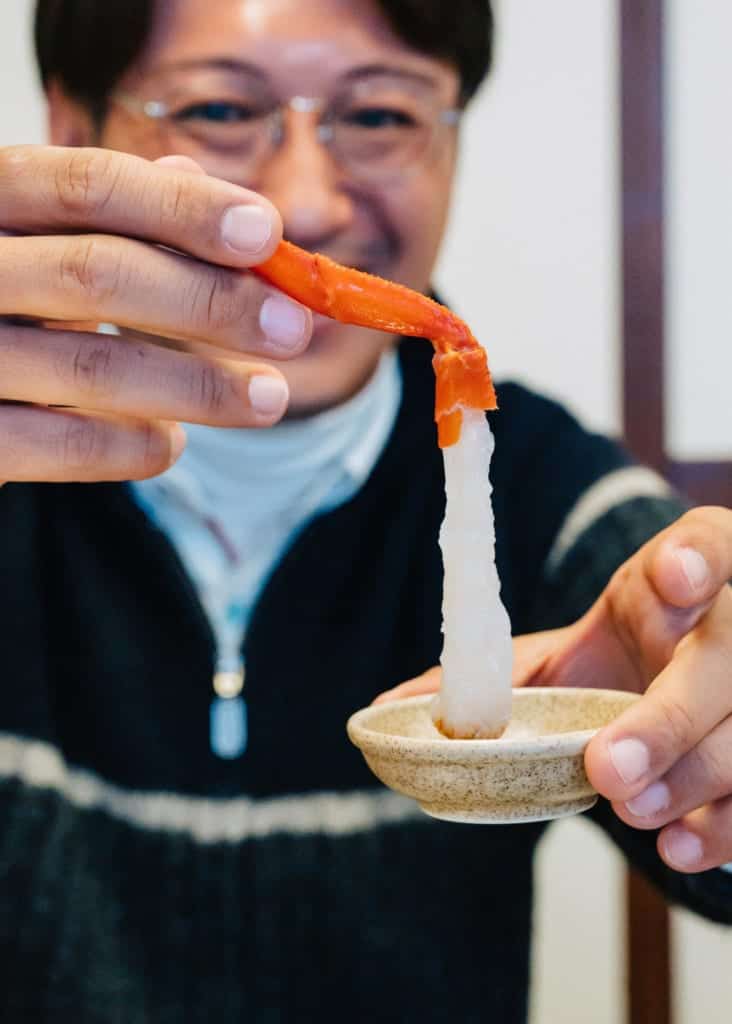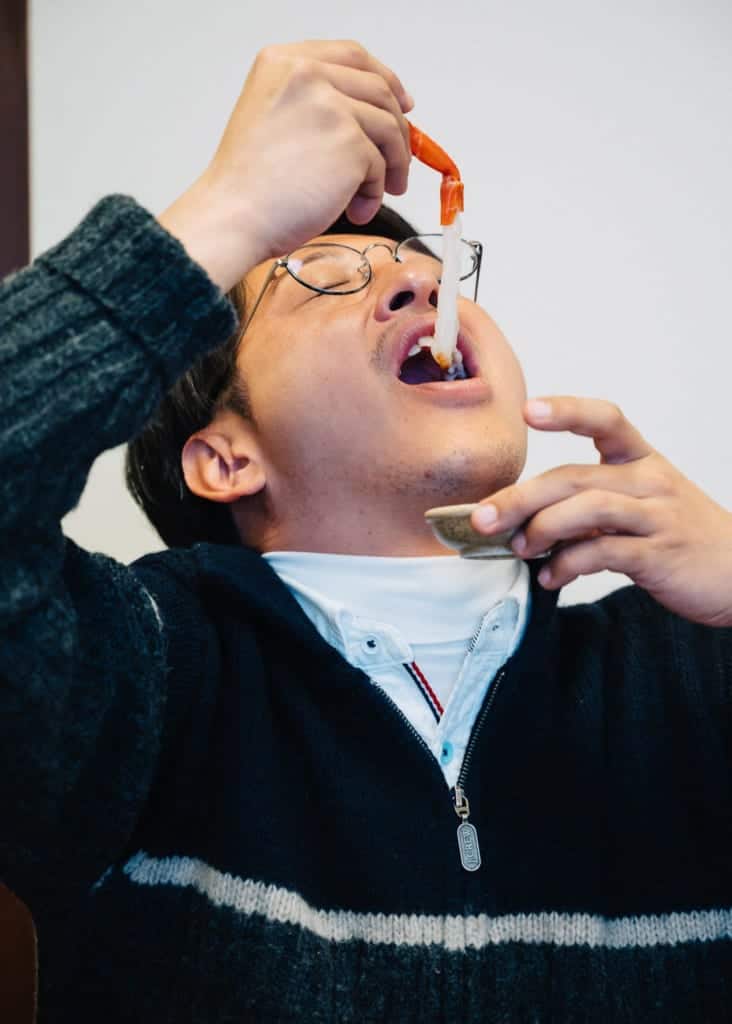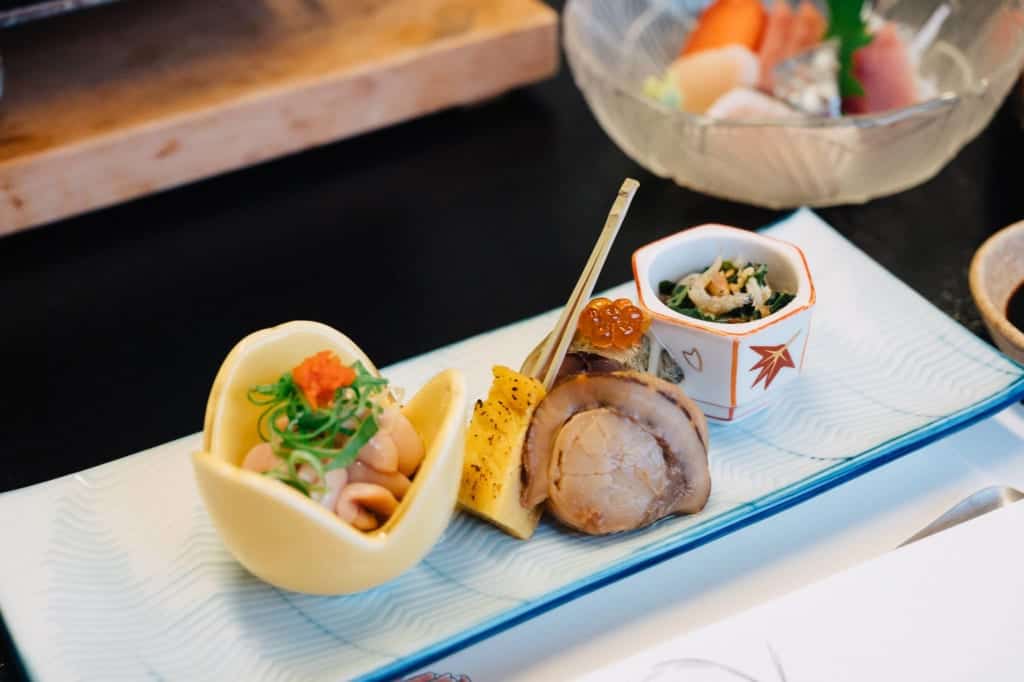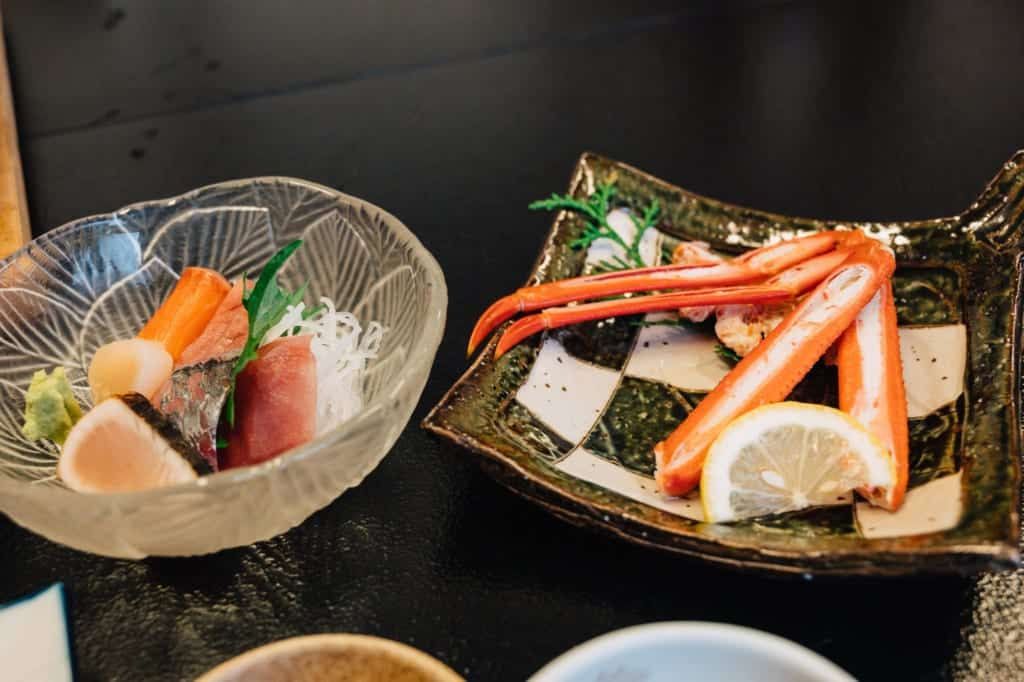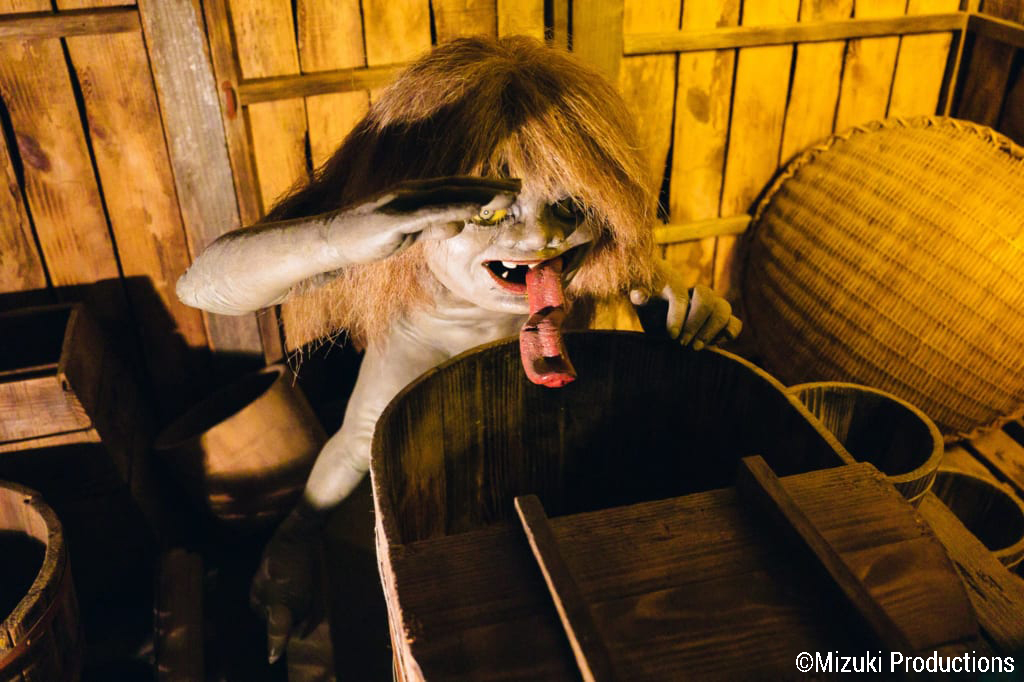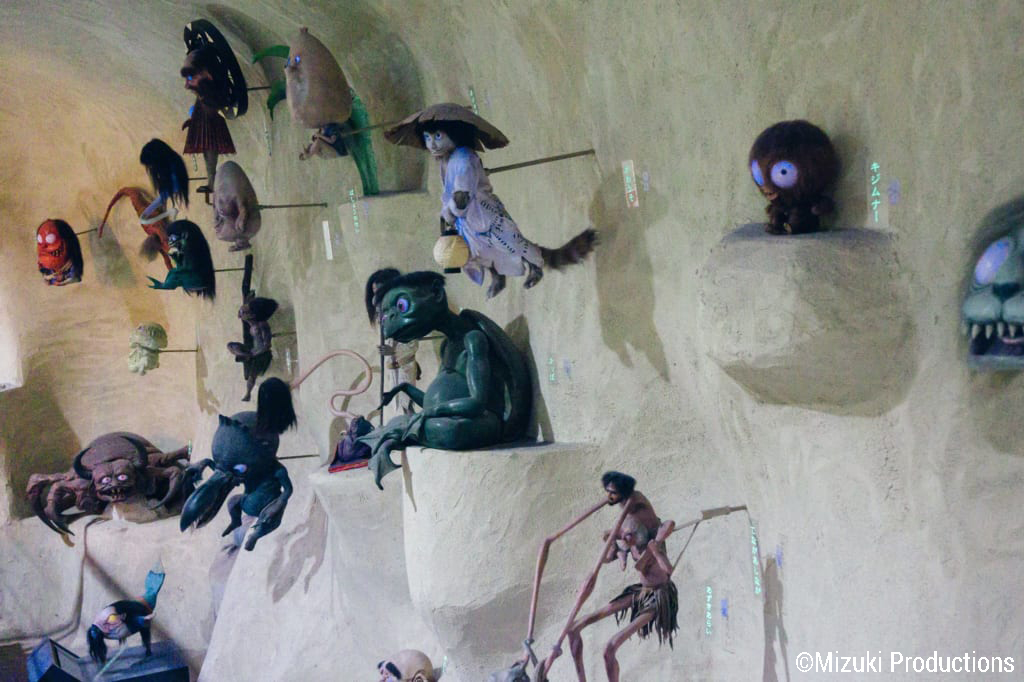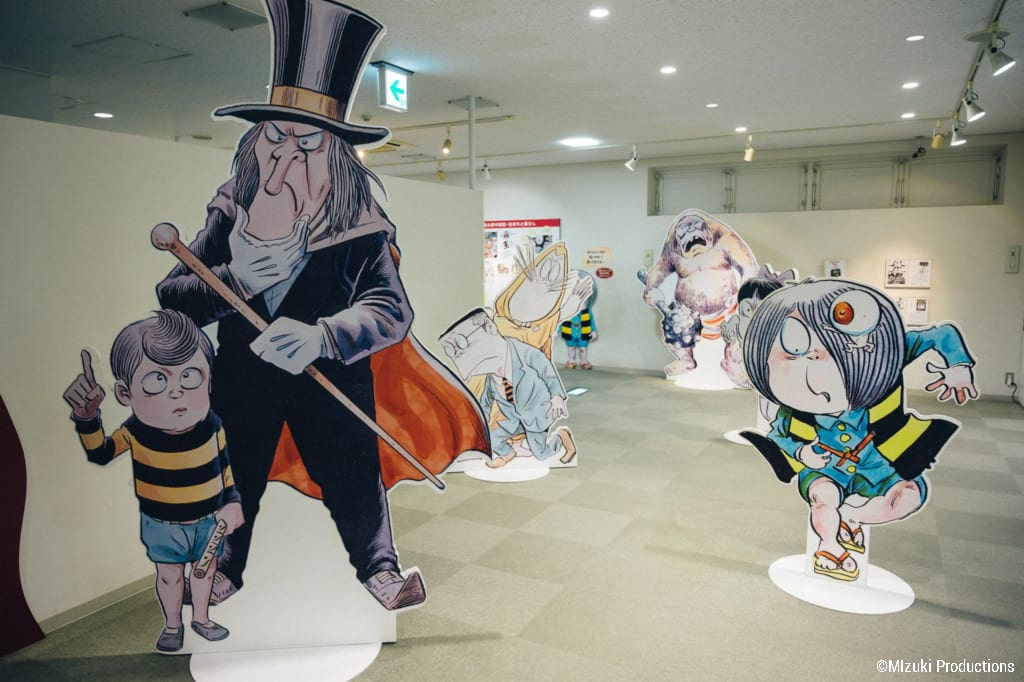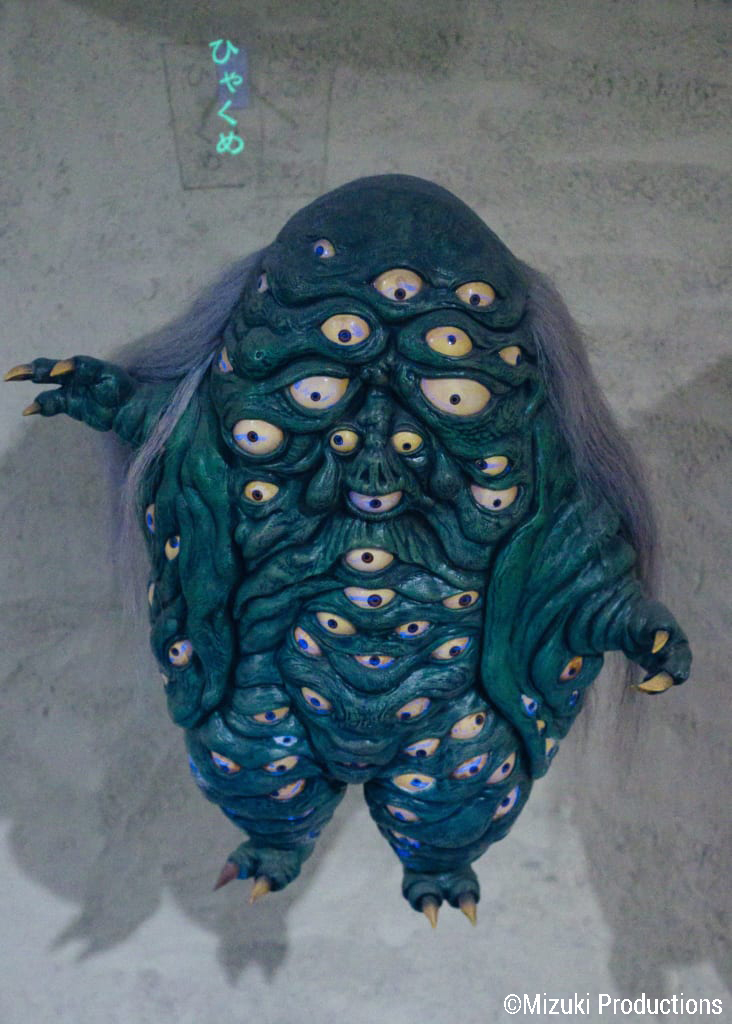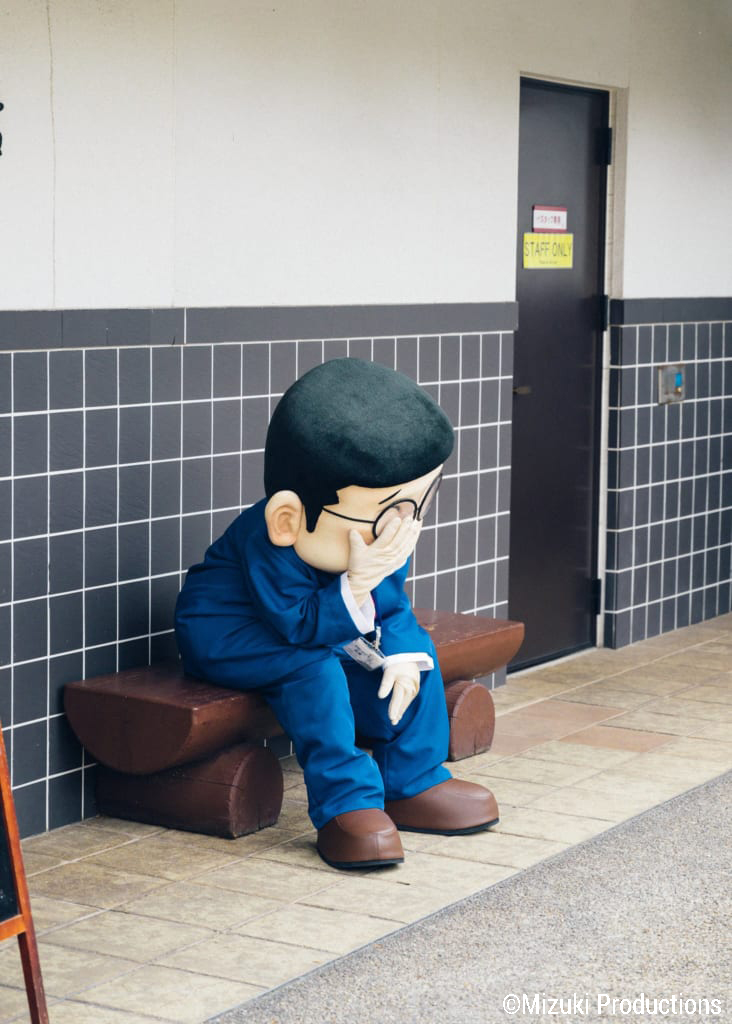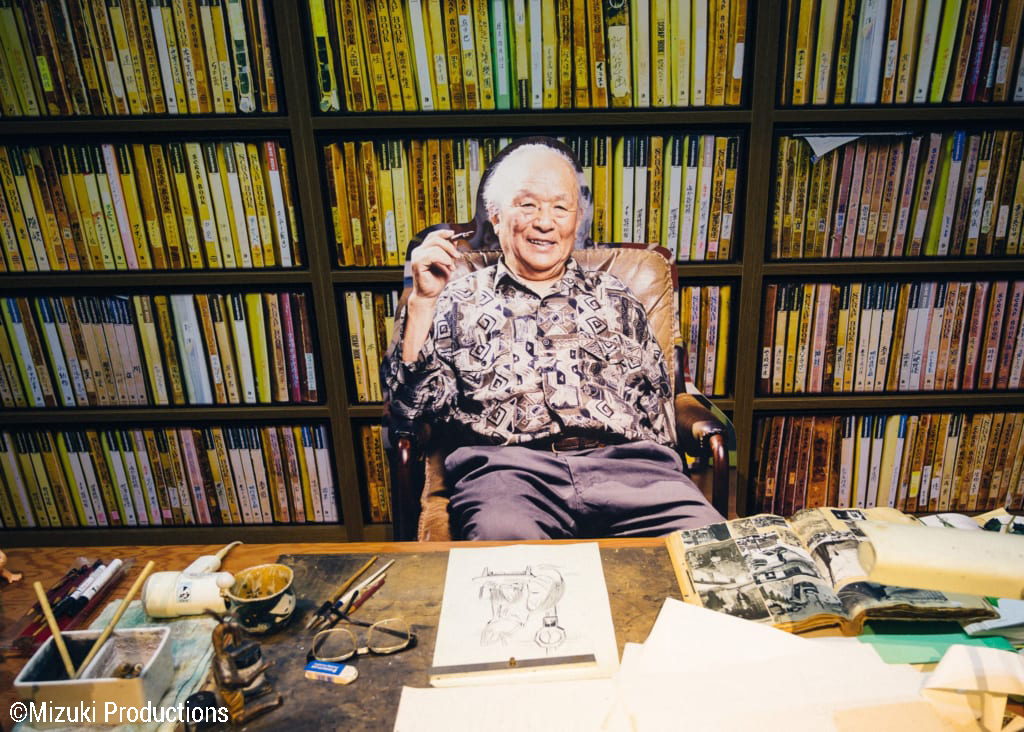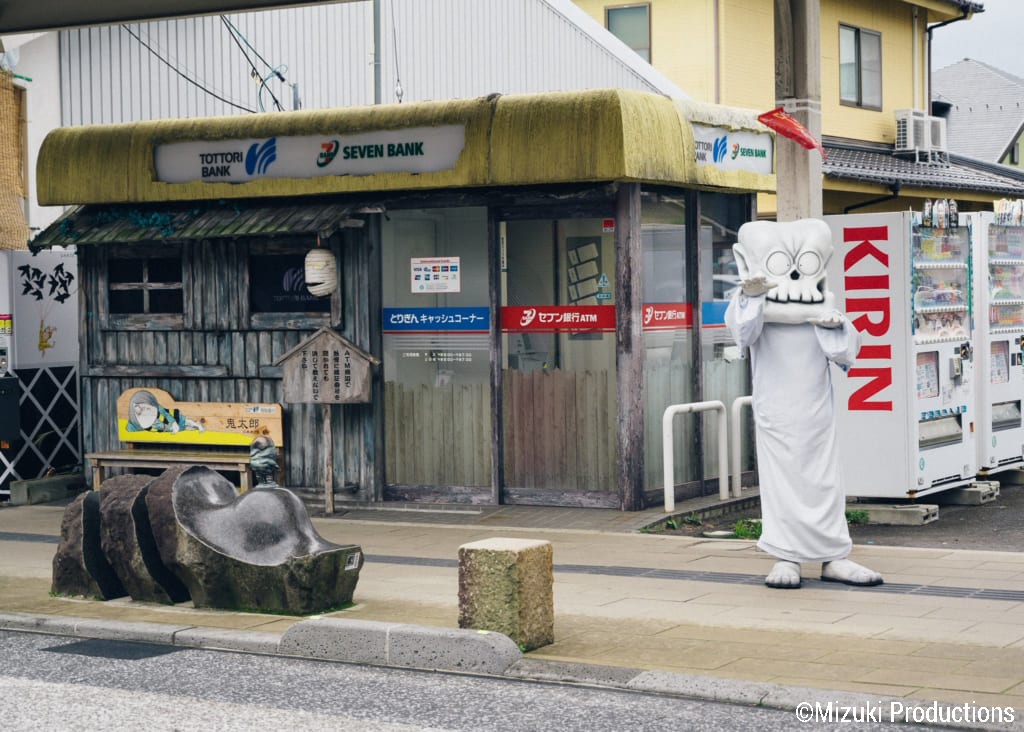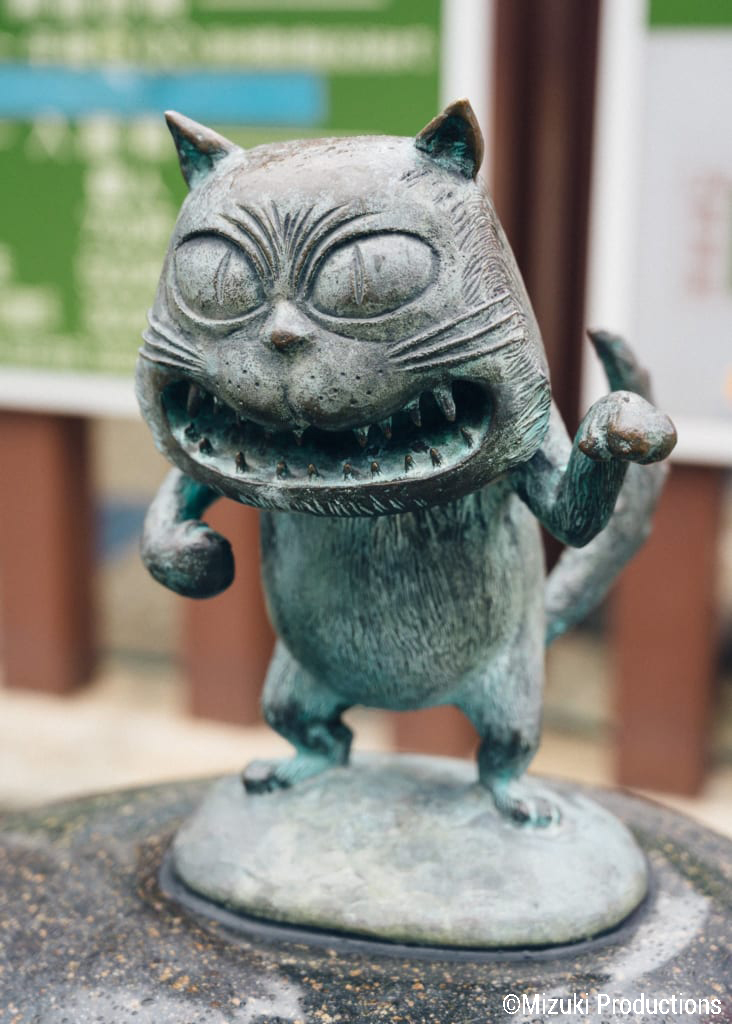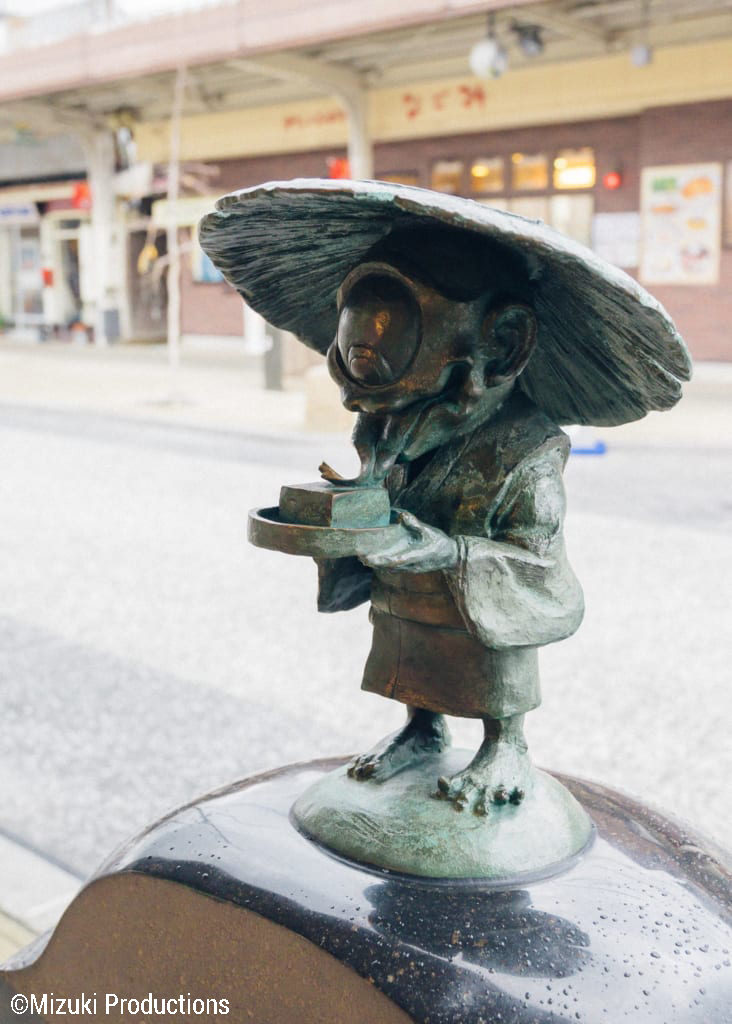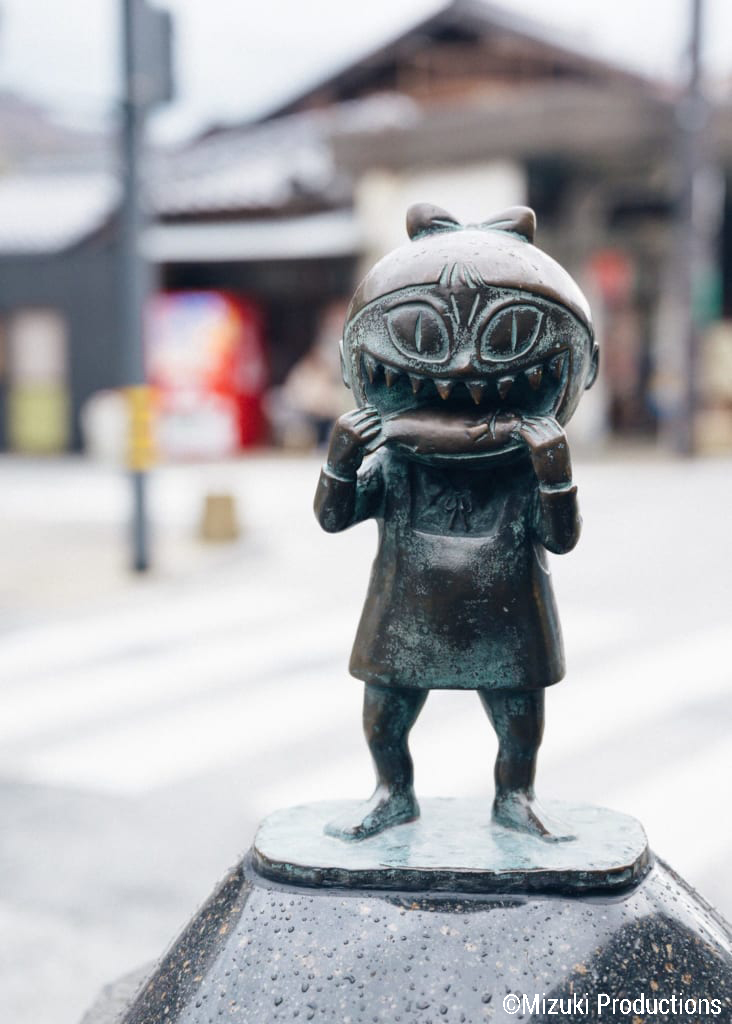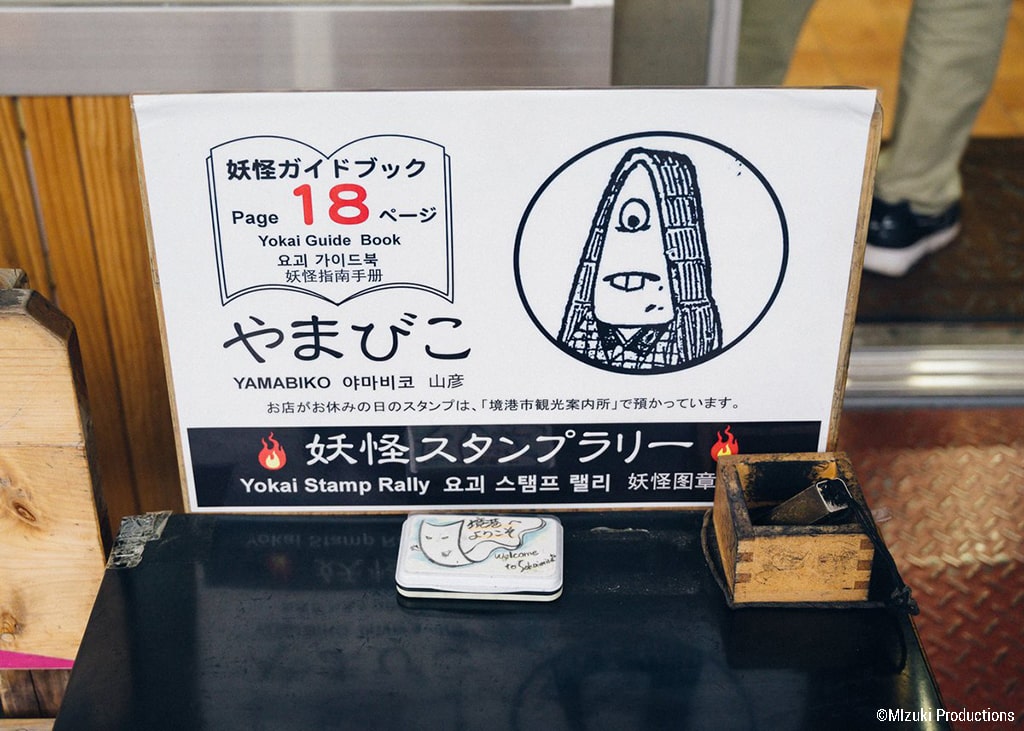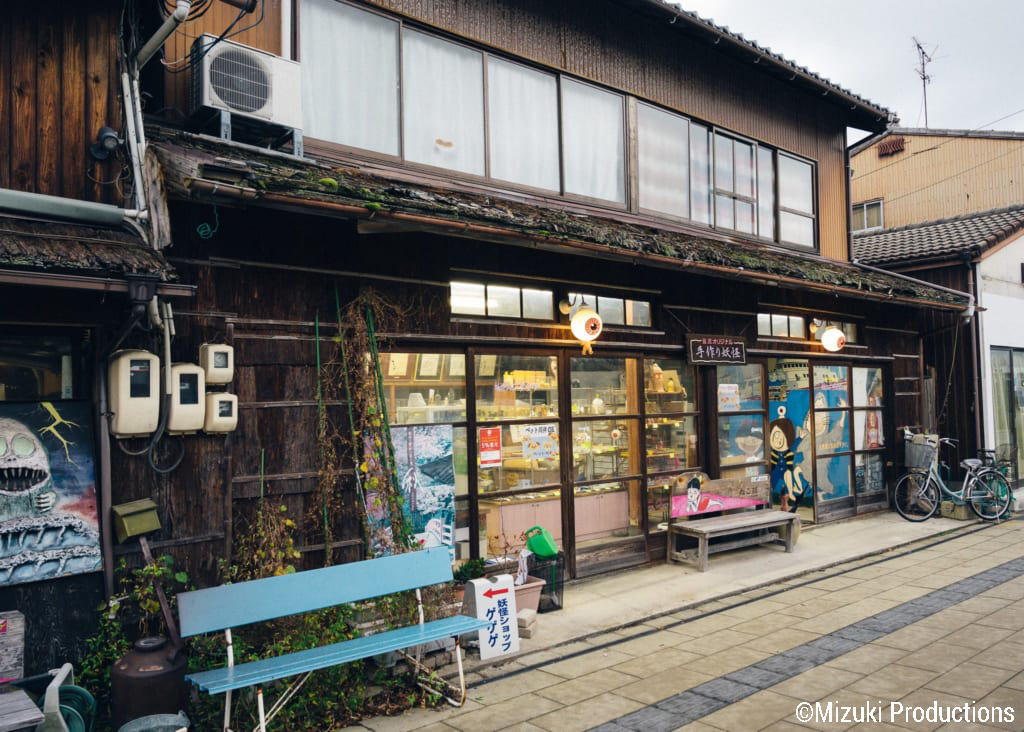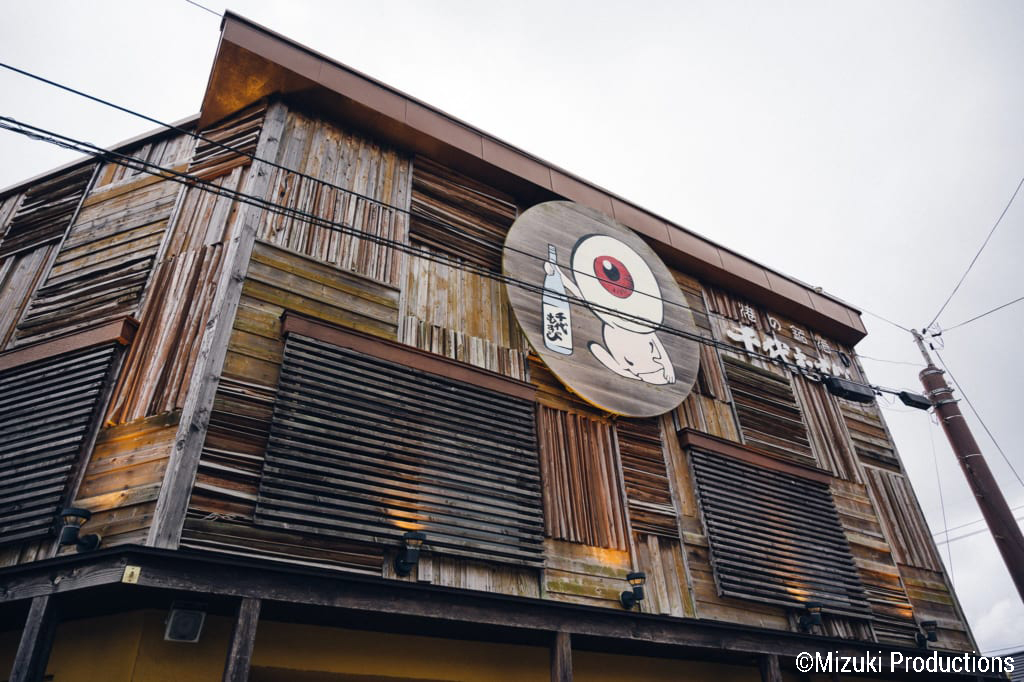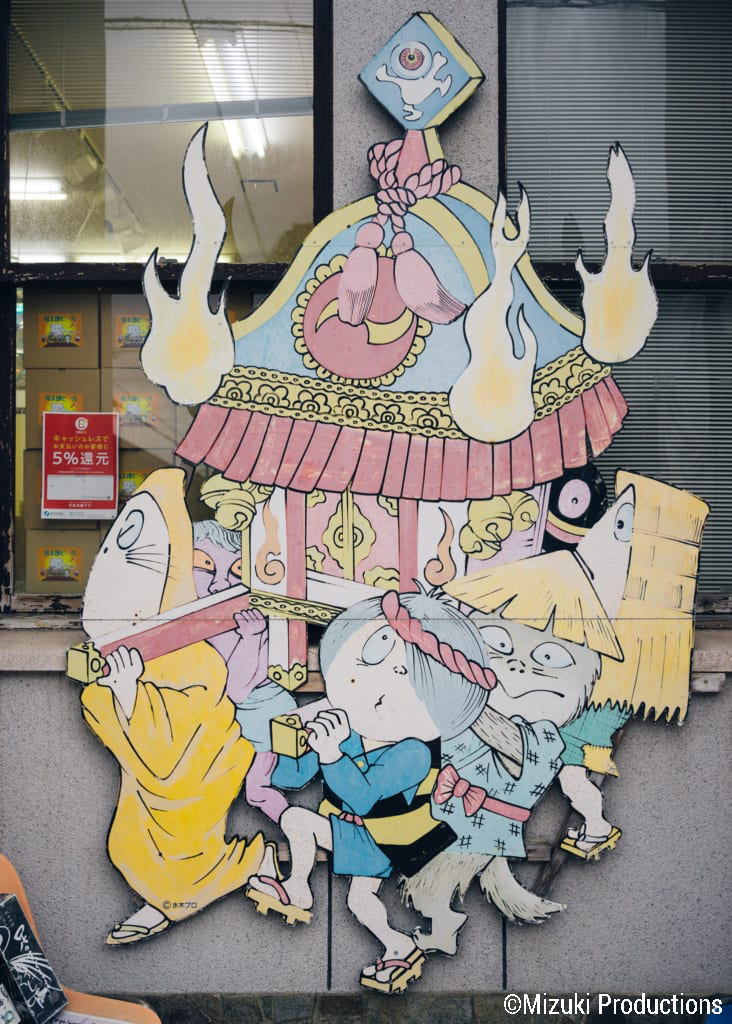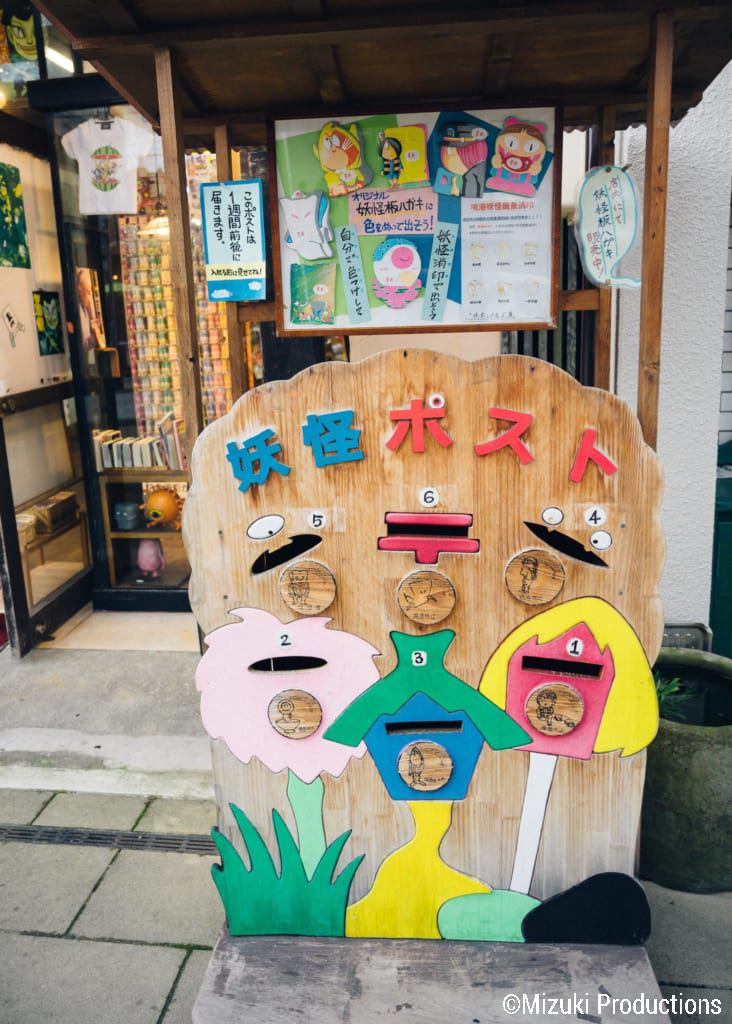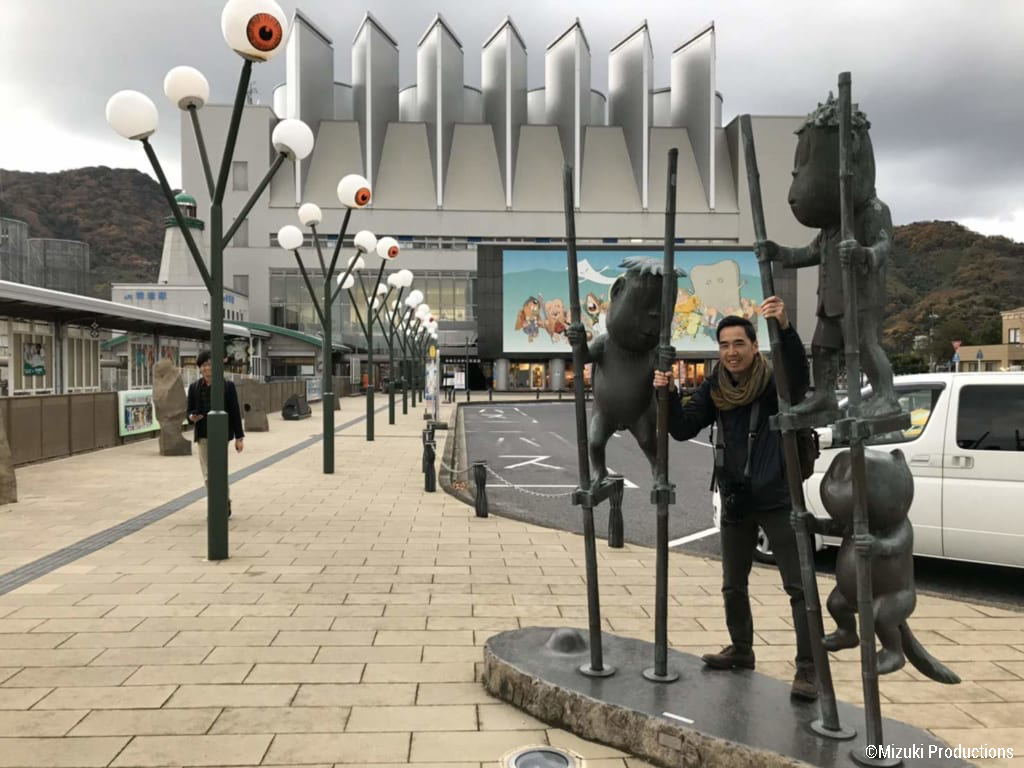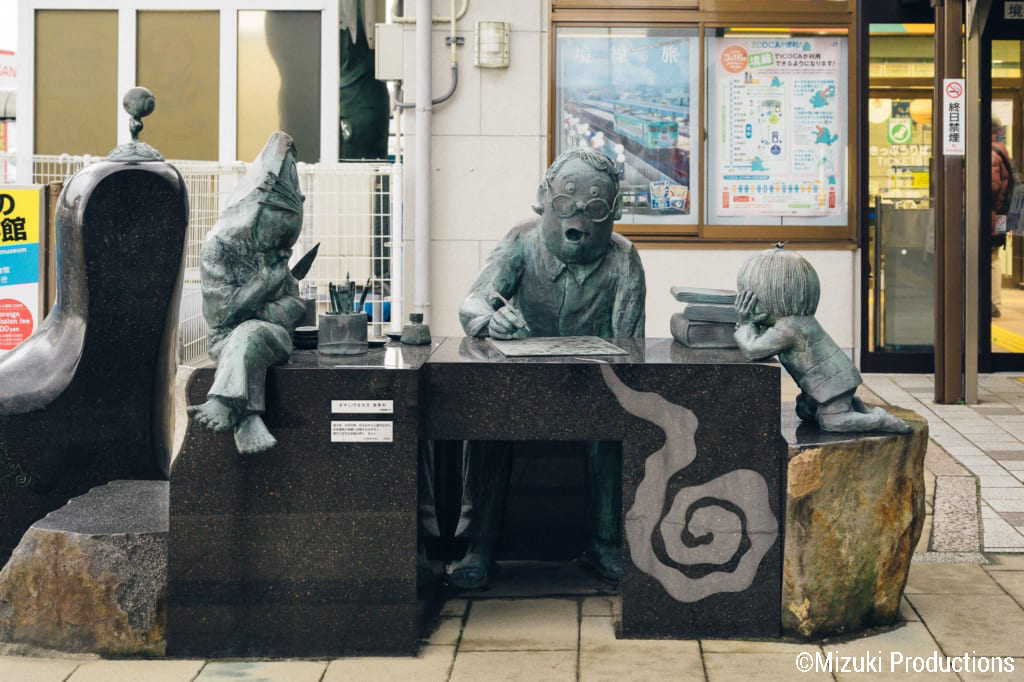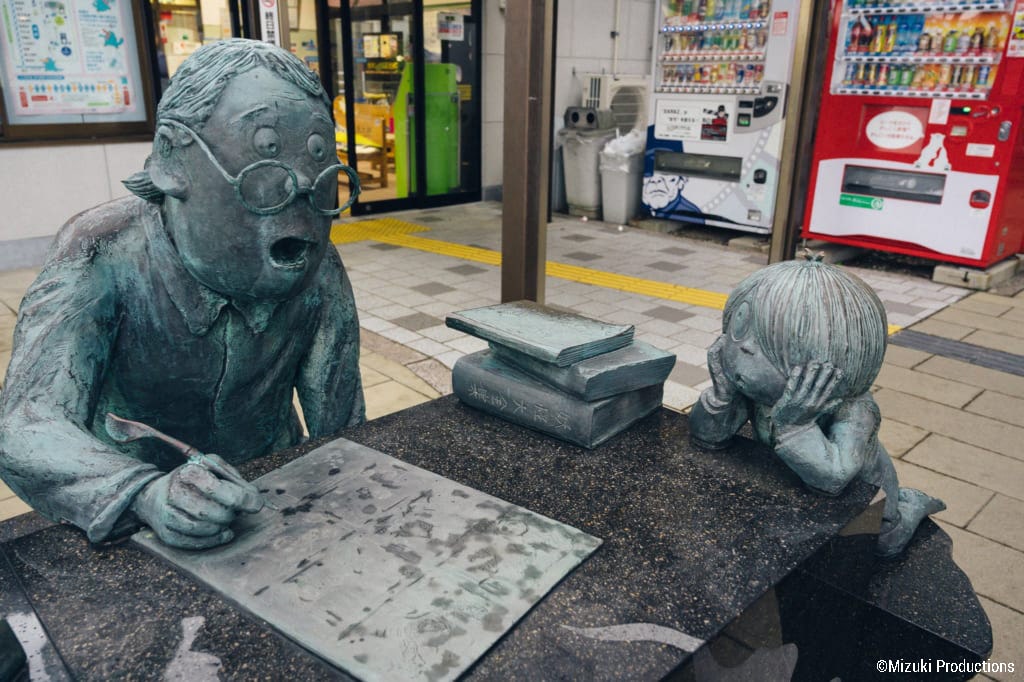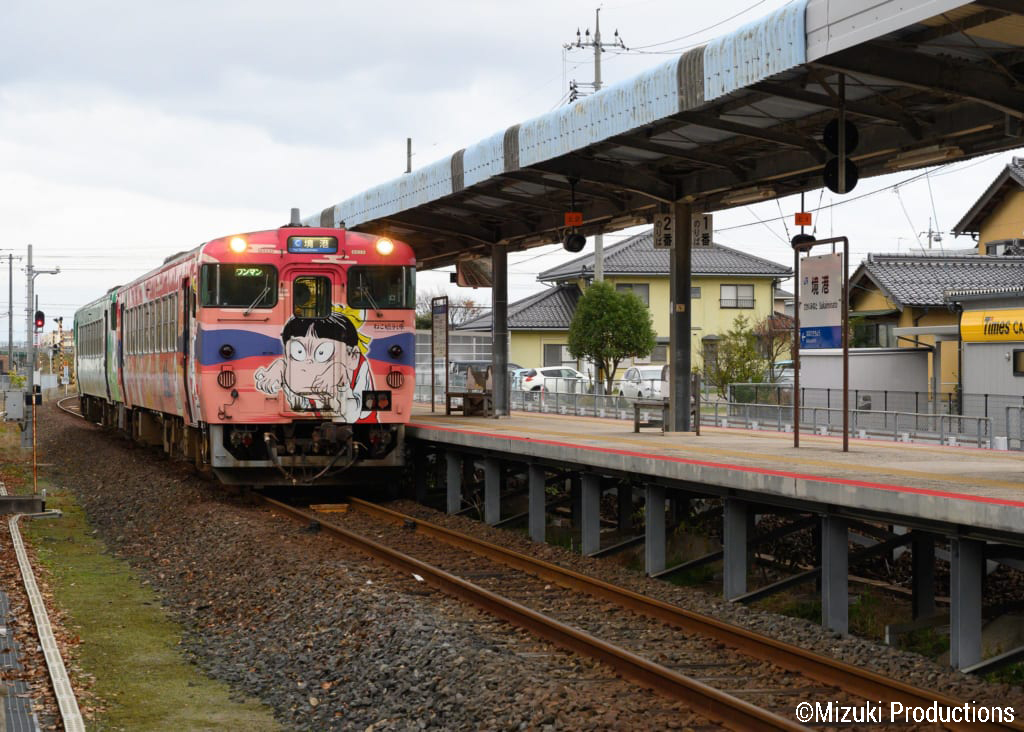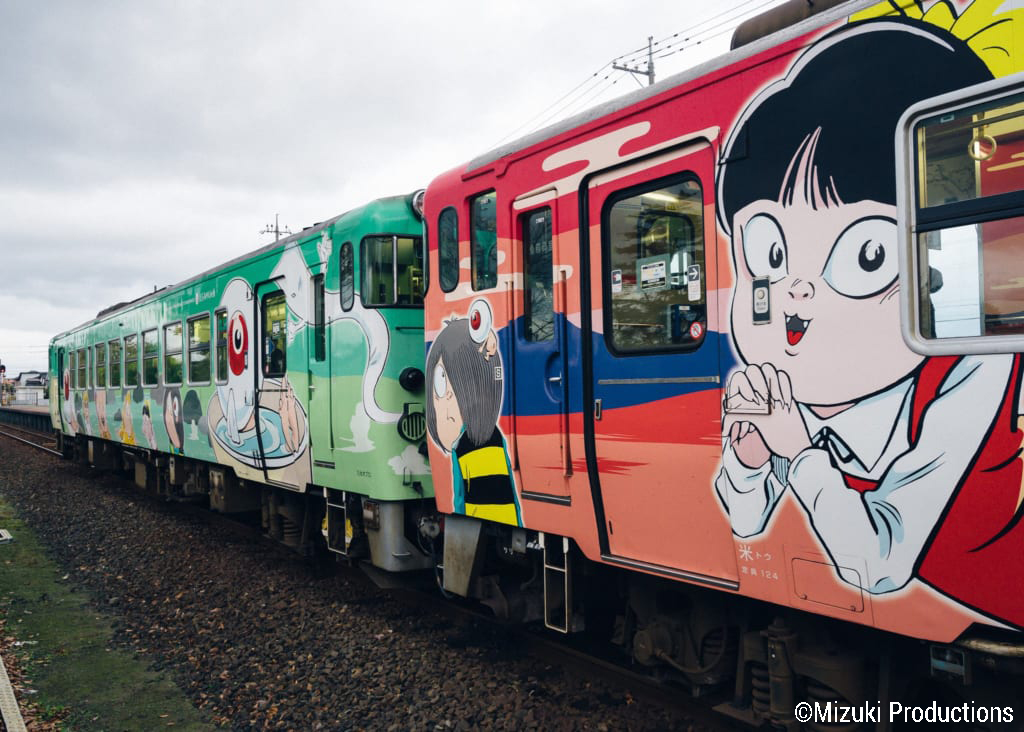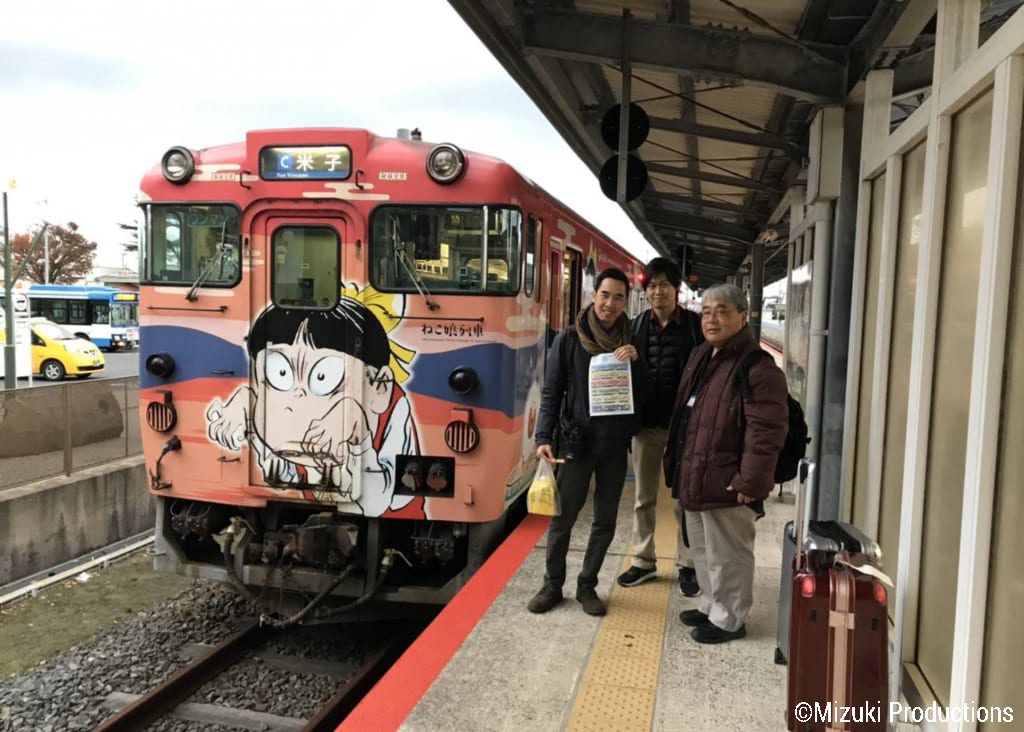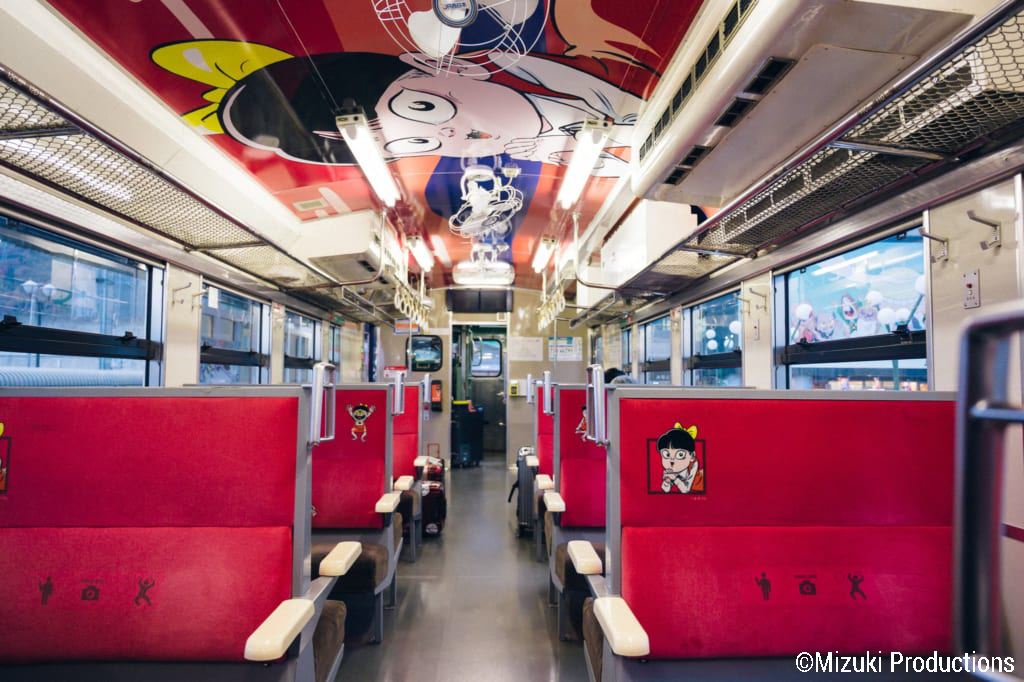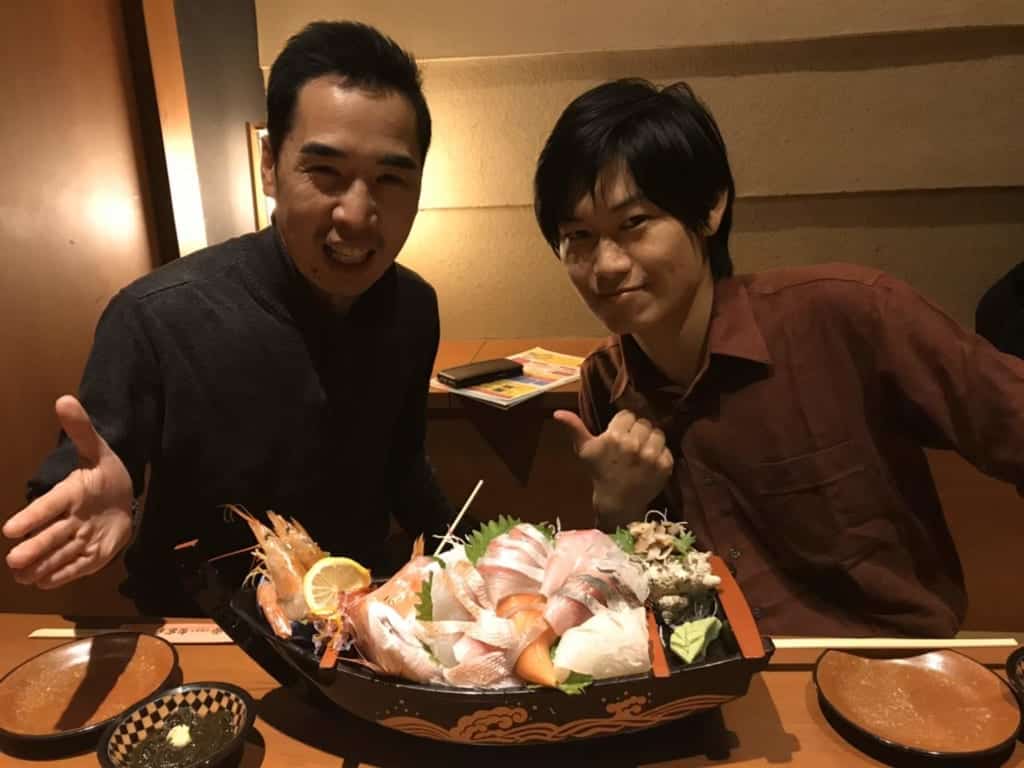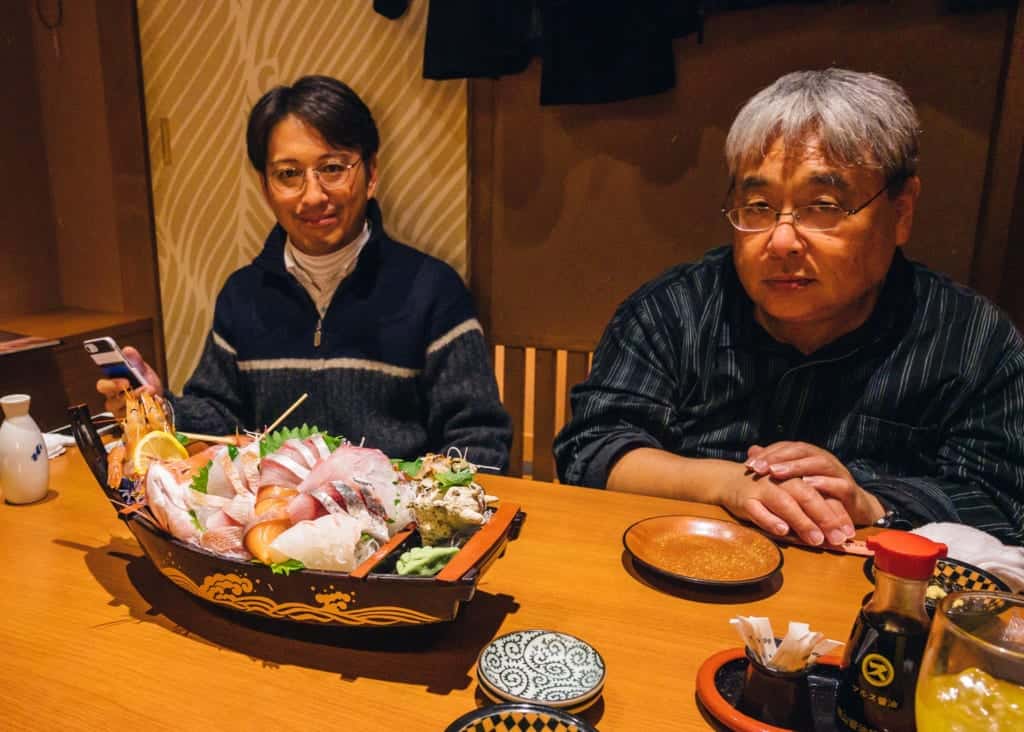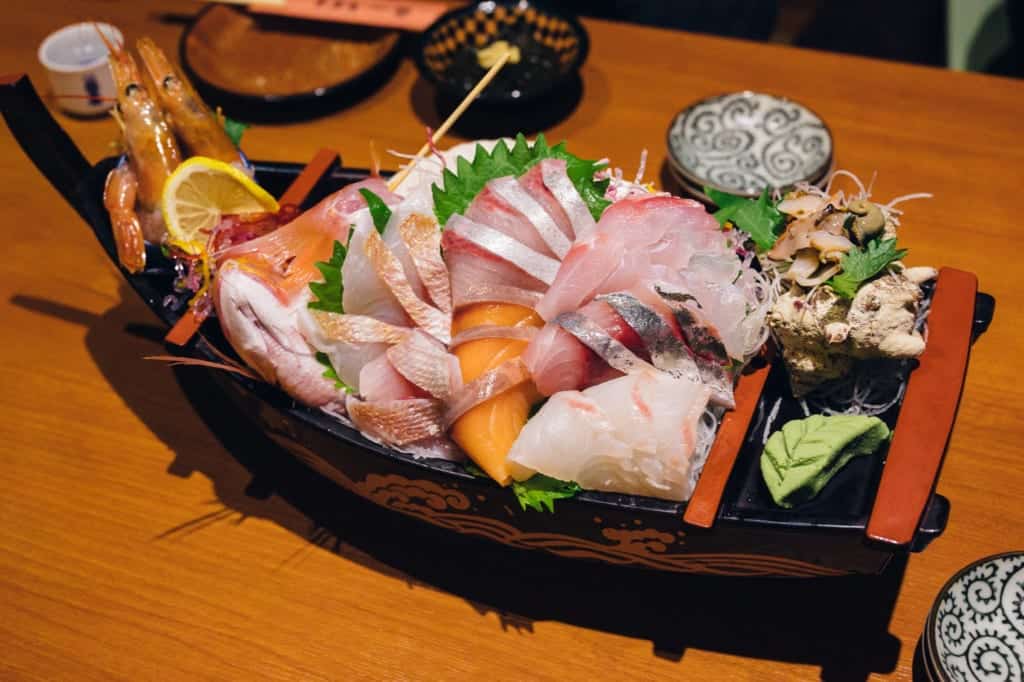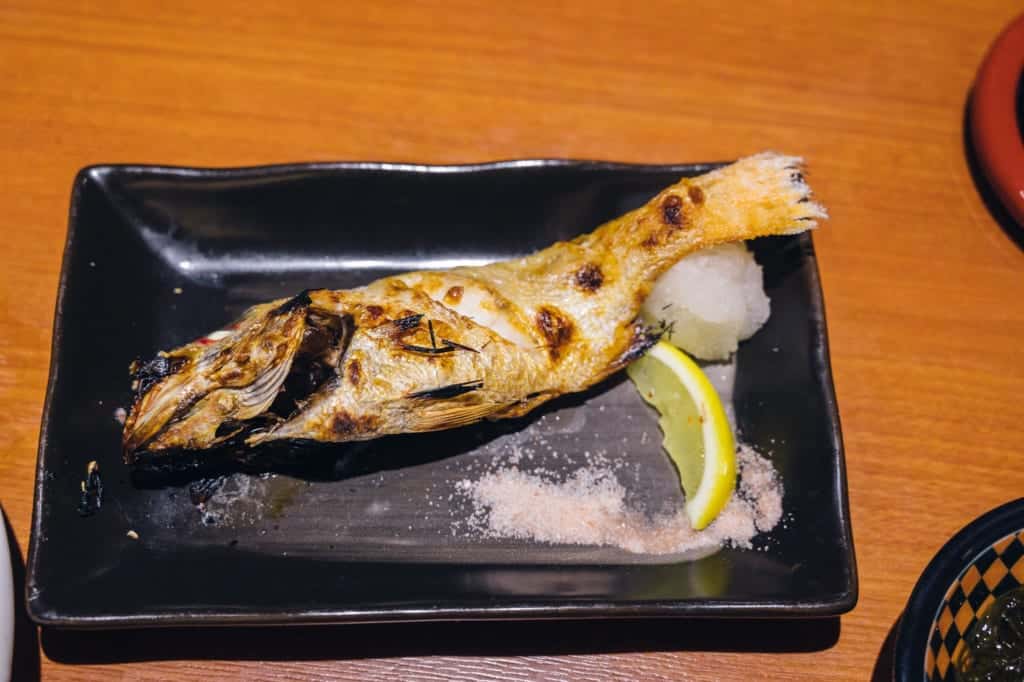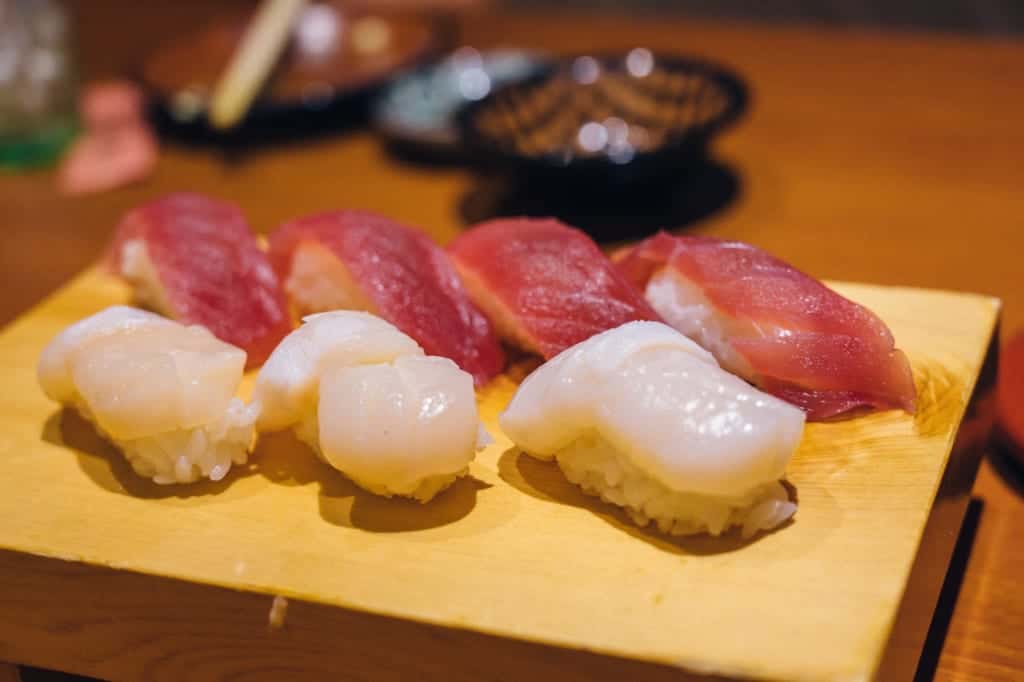We’ve already discussed in a previous article how easy and inexpensive it is to reach Matsue by bus from Hiroshima; now let’s talk about how easy it is to get around Matsue. With the purchase of the Enmusubi Perfect Ticket, you can ride Matsue city buses and the Ichibata Train line for 3 days. From Matsue Station, we caught the LakeLine Bus, a tourist-oriented service that makes a 50-minute loop around Matsue’s most popular attractions, including Matsue Castle. The Enmusubi Perfect Ticket can be purchased at any Ichibata train station or Ichibata Travel Service location, such as the one beside the Lawson convenience store at Matsue Station. For other locations, visit this webpage.
It took less than 15 minutes to arrive outside Matsue Castle, whose castle tower stands nearly exactly as it did in 1611.
How Matsue Castle Beat the Odds
Of the roughly 5,000 castles that once existed in Japan, only 12 original castles remain, 1 in 417. How does a castle survive 400 years or more without suffering some form of destruction? After all, it is a fortress, built for the perils of war. Moreover, when the Edo Period ended, the new Meiji Government saw the castles as a symbol of the past and ordered nearly 2,000 to be destroyed or dismantled, while many others fell into neglect.
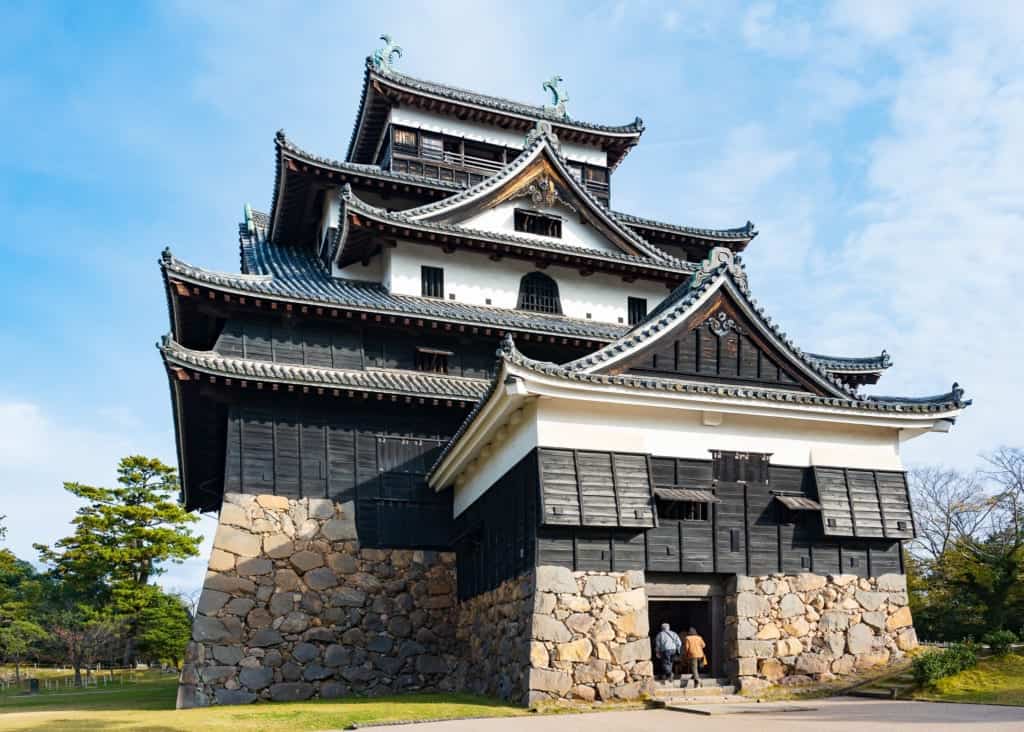
It turns out there were a series of fortunate circumstances that enable visitors to Matsue to tour what is roughly the same building that existed over 400 years ago. The first is that Matsue Castle was completed in 1611 after the Tokugawa Shogunate had unified Japan, so Matsue Castle was never involved in a battle.
When the Meiji Government succeeded the shogunate in the late 1800s, Matsue Castle, like so many others, was ordered to be dismantled. All of the buildings surrounding the main tower were taken apart, but two local residents spearheaded an effort to purchase the main tower of the castle, saving it.
During World War 2, when many Japanese castles were lost to bombing runs, Matsue was considered just a backwater town and never experienced wartime bombings; thus, the castle was again safe.
The six-story interior of the castle is mostly empty apart from a few important architectural relics. As many Japanese castles are stuffed full of old weapons and armor, I found it refreshing to be able to wander the floors and see the actual structures. I was informed, however, that the reason the levels were mostly empty was not primarily to make the castle more comfortable for tourists. Matsue Castle was built during the later part of the feudal period when construction materials for castles were scarce. Therefore, some “cost-cutting” measures were taken in the construction of the castle. Simply put, they weren’t sure how much weight the floors of the castle could bear. That didn’t sound reassuring, but the castle had been here for 400 years already; who was I to judge the engineering choices of the day?
From the sixth floor of the castle, you can survey the entire city of Matsue to the shores of Lake Shinjiko and Lake Nakaumi and beyond, as Matsue city is located strategically between them. And outside the castle, you can stand at the base of the wall, feeling like an ant waiting to be squished, and realize what a task it would have been to try to capture this immense stronghold.
Matsue Castle also had an extensive moat system protecting it, and that system exists today as a sort of transportation route for the Edo Period part of the city. The Horikawa Sightseeing Boats take visitors along these picturesque ancient waterways, under wooden bridges built centuries ago and through some surprisingly tight spaces where the boatsman may need to lower the roof on you for a minute or two, to pass under some very low bridges.
Our boatsman was pleasantly chatting away in Japanese, sharing information about the area, and telling jokes. Even if I couldn’t understand everything he was talking about, it was apparent he and the ladies sharing our boat were having a great time. Laughter is a universal language.
A full loop on the tour takes about 50 minutes. However, there are several stops on the boat tour where you can alight or board a boat, and we had to disembark early to catch our Loop Line bus back to Matsue station, where we would catch another bus to Sakaiminato, the next stop on our tour. Incidentally, the fare for the bus to Sakaiminato is also covered by the Enmusubi Perfect Ticket, so we just flashed the pass to the driver when getting off the bus.
Sakaiminato – Western Japan’s Crabbiest City
When you think of crab in Japan, most people think it comes down from the cold waters of Hokkaido. The truth is that Western Japan gets almost all of its crab from the quiet little port city of Sakaiminato, near the tip of a peninsula that curls out from western Tottori. Sakaiminato has been a trading port with the West since the late 1800s and Western Japan’s main seafood producing and processing port.
This means that if you come to Sakaiminato, you’d better try the crab. Ajidokoro Misa is one of the better-known crab restaurants in the city. It is advisable that you make a reservation, so, fortunately, there is a webpage where you can check table availability and make reservations in advance. Our resident restaurant-magician Seki-san had taken care of the reservations for us (lunch is a little easier to book than dinner), and we were escorted to a private dining room where two live crabs awaited us.
There was a red Benizuaigani crab and a brown Matsubagani (“pine needle crab”) still moving on a large platter, waiting for a photo op with Sugano-san and me. After this, the two were taken away to the kitchen, where they were carefully dismembered by the expert chefs before being returned to our table. The Matsubagani had a small tag attached to its front leg, which Seki-san explained meant it was perfectly intact, missing no limbs or body parts. The presence of the tag increased its market value ten-fold.
The crab returned to us ready to eat in three different ways: raw, as crab sashimi, gently boiled in broth as shabu-shabu, or grilled over charcoal on a small barbecue. Only the highest quality crab can be eaten as sashimi, I sampled my first leg that way, sweet and tender. The claw, with its abundance of meat, was better prepared as shabu-shabu, swished around a few times in the broth until the flesh turned from translucent to opaque. Other legs were laid out on the grill, absorbing the smokiness of the charcoal as they cooked.
Complementing the crab was a plate of appetizers with a huge scallop and some other exotic seafood that wasn’t easily identifiable. There was also a plate of incredibly fresh sashimi and a few boiled crab legs, providing a fourth way to sample the local crab.
Needless to say, if you are a crab lover like myself, Misa isn’t just a place where you can get the freshest crab, but also at a relative bargain. It’s not cheap, just much less expensive than if you ordered similar dishes in Tokyo or Osaka.
The Yokai Manga World of the Mizuki Shigeru Museum
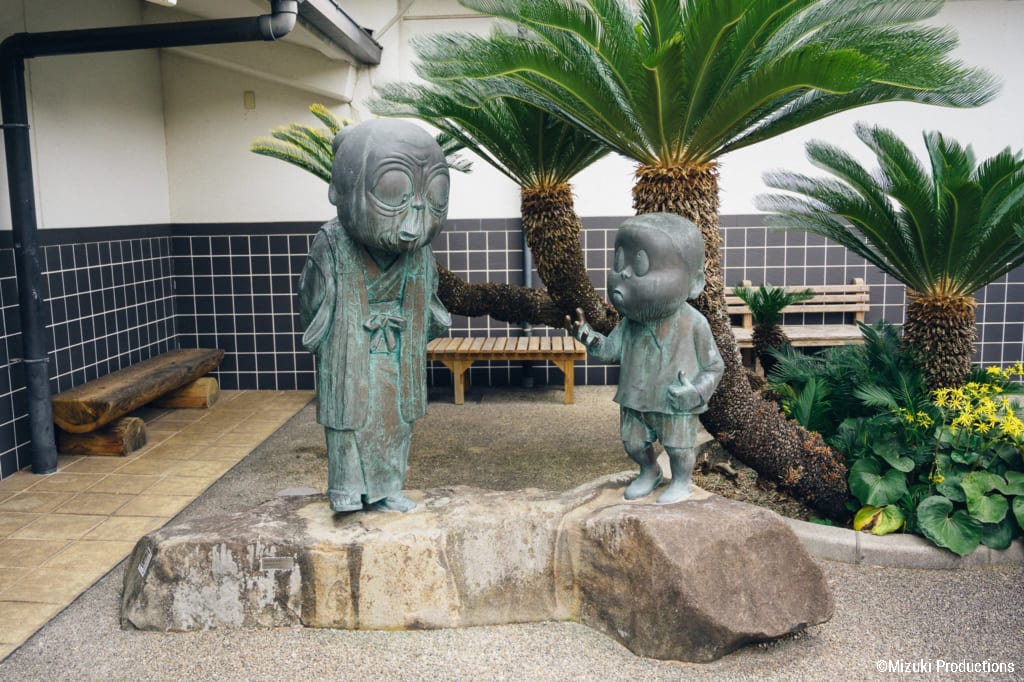
Just a few minutes’ walk from Misa, we visited a museum created for a hometown hero Mizuki Shigeru, manga artist creator of Gegege no Kitaro, one of Japan’s most beloved Manga. One might say the Mizuki Shigeru Museum is Japan’s first museum about yokai, the supernatural beings portrayed in his Manga, but this museum is really more about Mizuki than anything. (Besides, the first yokai museum in Japan is in Miyoshi, which we visited two days earlier!) Though Mizuki lived most of his adult life in suburban Tokyo, he had fond memories of growing up in Sakaiminato and was thrilled when Mizuki Shigeru Road was opened as a tourist attraction. The road, leading from the station to the museum, preceded the museum by 10 years, and when the city realized how many annual visitors the road generated, building the museum became a no-brainer. Today 3 million people visit Sakaiminato to enjoy Mizuki Shigeru Road and Museum.
The museum sheds some light on the events that shaped Mizuki’s incredible life: growing up as a young ruffian in Sakaiminato and learning stories about yokai from Nonnonba, a grandmother-like figure who lived near his childhood home. Enlisting in the army and experiencing the horrors of warfare in Papua New Guinea, where he lost his entire platoon and his left arm in combat. Becoming a man dedicated to peace and lifelong appreciation of other nations and cultures through world travel.
Outside on the street, two of the Manga characters from Kitaro come to life. Salaryman Yamada, a character Mizuki featured in random roles throughout his Manga, sat with his head in his hands, perfectly exemplifying the feelings of fellow salarymen (office workers) all over Japan. Shinigami, the Japanese version of the Grim Reaper, stopped in his tracks and stared at us as we passed by. This is usually a bad thing. We just casually waved and continued down the street.
Mizuki Shigeru Road is ordinarily a lively place, filled with visitors, but today was a cold weekday past the peak tourism season, so the street was quiet. At night, blue spotlights highlight the 177 bronze statues of Mizuki’s creations lining the sidewalks. A little book is available to purchase, which not just describes the individual Manga sculptures but also allows you to collect a rubber stamp at each location. Without the book, a QR code on each statue can be scanned, taking you to a webpage about the subject (in Japanese).
Though there was some initial resistance to Yokai theme of the street, today pretty much every business along the road participates in some small way. There are Kitaro decorations galore outside of the shops, and an endless variety of Kitaro themed souvenirs inside. There is even a shop where you can paint your own wooden Kitaro themed placard and have it mailed to yourself with one of several special monster postmarks.
The low season meant many shops were closed on the day we visited, and it was actually the kind of place I wished was MORE crowded. I thought the crowds of visitors would create a fun and lively atmosphere befitting the personality of the hometown hero being memorialized here. We ended up back at Sakaiminato Station, where a sculpture sits outside that perfectly represents Mizuki. He sits at his desk, working on an illustration while Kitaro and a few of his other Manga creations watch in earnest.
Riding the Kitaro Train to Yanago
There was one more Kitaro experience to be had as we made the train ride to Yonago where dinner and our hotel awaited us. The JR Sakai line has several trains decorated with characters of Kitaro and each of the 16 stations has been named with a nickname of a yokai. Furthermore, several of the trains that run on the line are decorated with Kitaro characters; we rode in the Nekomusume train car. To be precise, I slept in the Nekomusume train car because it had been a long day.
Seki-san had one more culinary treat in store for us, dinner at the Izakaya Kabura, where we enjoyed another round of Tottori’s deliciously fresh seafood. First, they brought a literal boatload of sashimi for us to share. You can almost see the excitement in Hiro-san’s eyes as he patiently waited for me to take a photo.
Next Seki-san ordered a grilled nodoguro, possibly the best tasting whitefish in existence, which Japanese enjoy for a very brief season. We also had a variety of nigiri sushi, coming plate by plate until we couldn’t eat another bite. Seki-san wanted to convey that Tottori is home to great seafood, and I think he made his point, as we finally tottered back to our hotel, the Harvest Inn Yonago next to Yonago station, for a well-deserved rest.
The next morning we would be hiking on the Mt. Fuji of western Japan, Mt. Daisen. That is, if the weather was kind to us.
Sponsored by Chugoku Region Tourism Promotion Association / Chugoku District Transport Bureau


